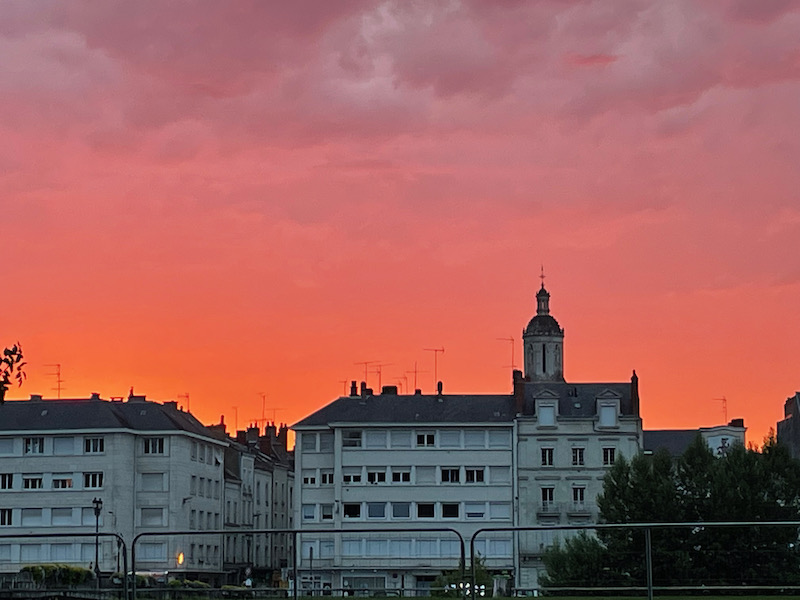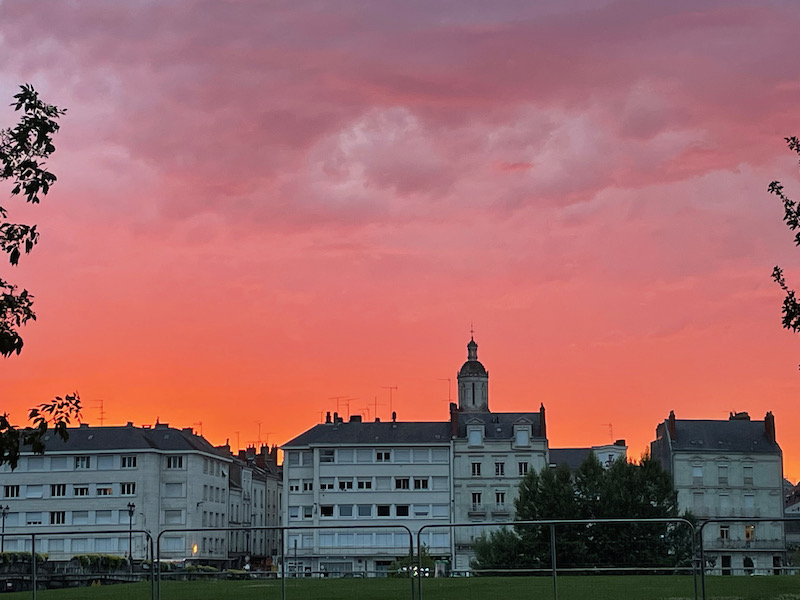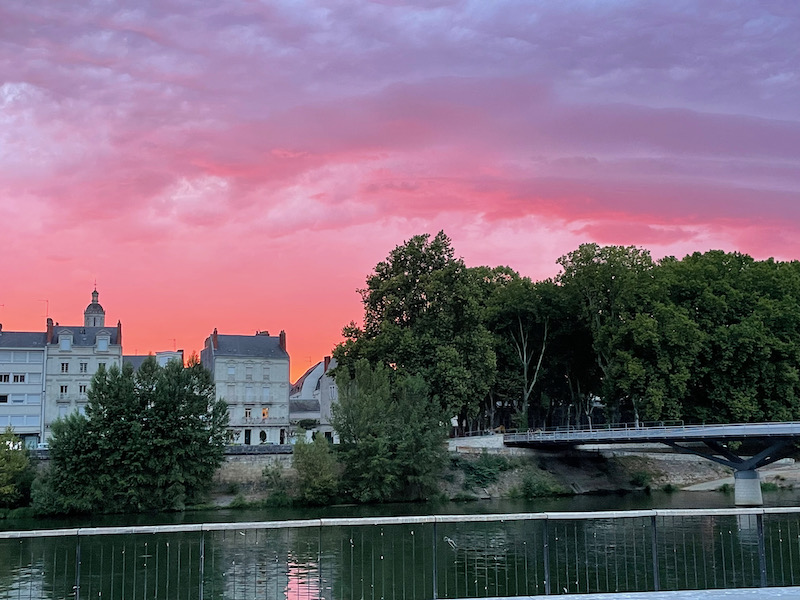Our Blog - Angers, France
Angers is the largest city that we visited on this trip, with a population of between 150,000 and 430,000 people depending on which "area" you look at (city vs metropolitan area). It has a few nicknames: The "Black City", due to the many black slate roofs, "City of Flowers" or "Green City" based on the flowers and parks in the city, and "Angers the White", due to the modern white tufa façades.
The oldest streets are located where the Castle of Angers is today. We did a tour of the castle and there were too many pictures to include into this page, so I broke it into its own Castle of Angers blog which also has a link to a page with the famous Apocalypse Tapestry (which is housed in a specially-built gallery). But the military presence actually dates back to the 3rd century, including parts of a defensive wall that was built to protect the city from the Germanic invasions of 275 and 276 AD. We tried to walk around to see most of the most important sights of the city.
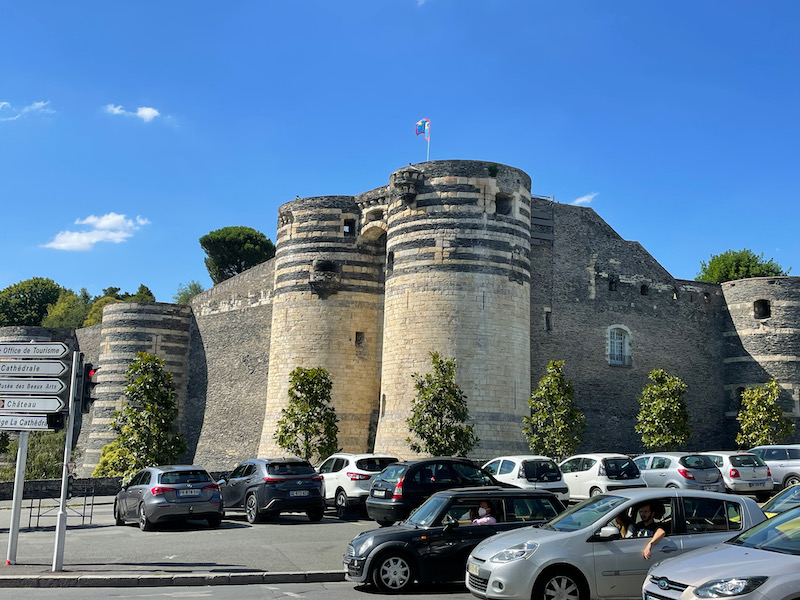
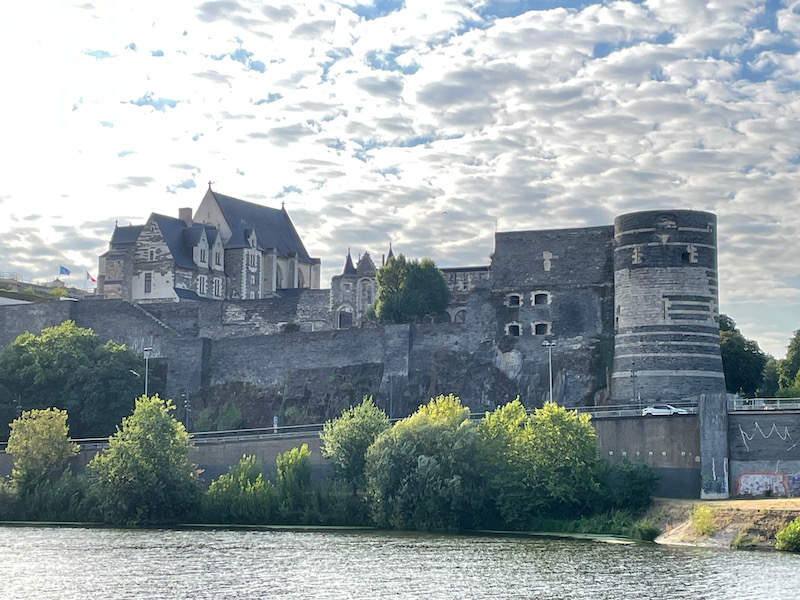
The Église de la Trinité d'Angers dates back to 1028, when the Abbey of Notre-Dame-de-la-Charité was founded. By the 2nd half of the 11th century, too many people were coming to the chapel of the abbey and a "real" parish church was built nearby, the Church of the Trinity. This structure dates from the end of the 12th century except for the bell tower, which is from the 16th century. The building went through the Revolution without damage but underwent some transformations in the 19th century in the Neo-Romanesque style. Most of the stained-glass windows also date from the 1860s.
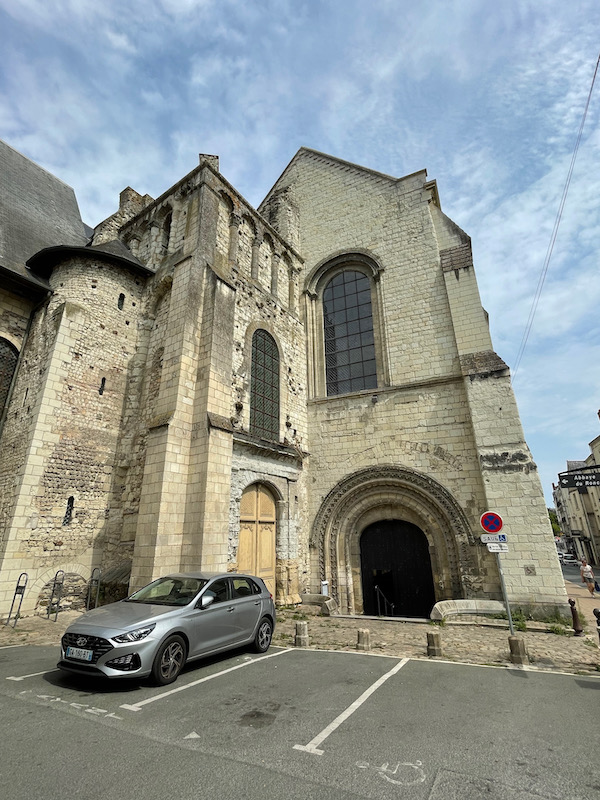
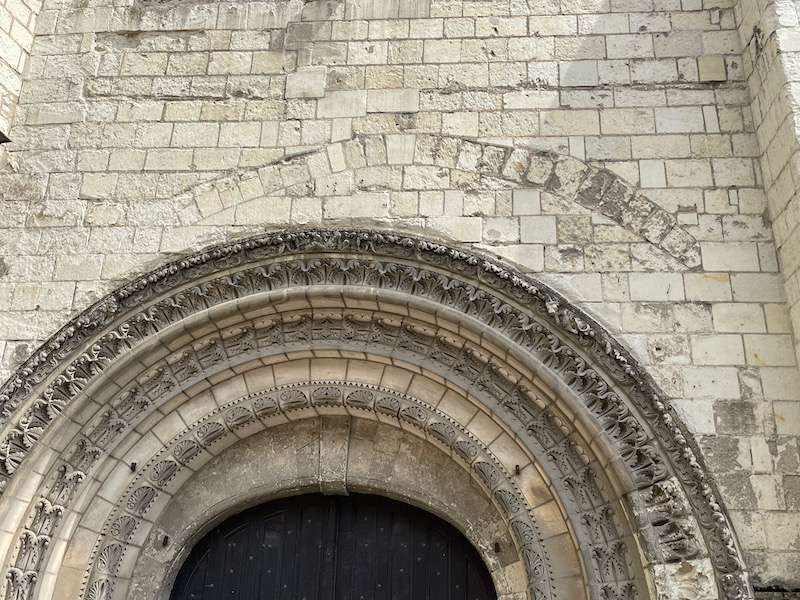
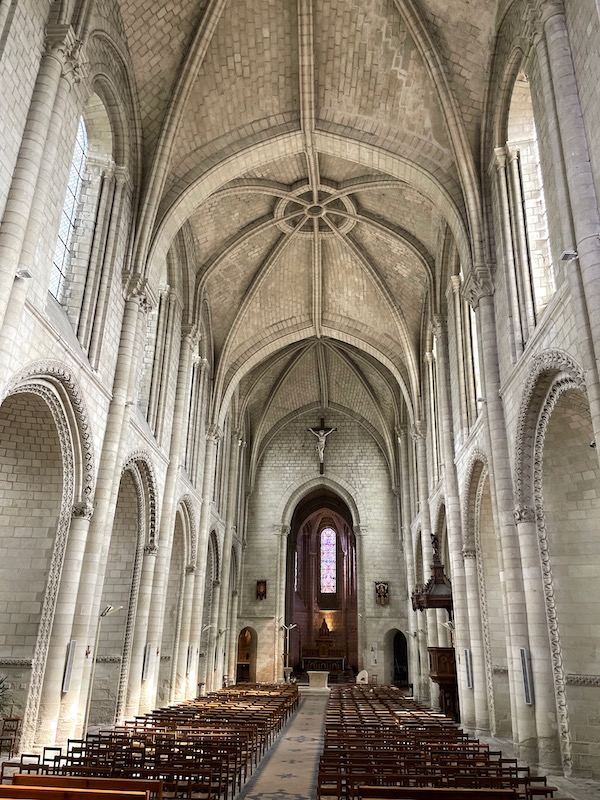
The high altar, in polychrome carved stones, dates from 1873, and shows the apostles surrounding Jesus.
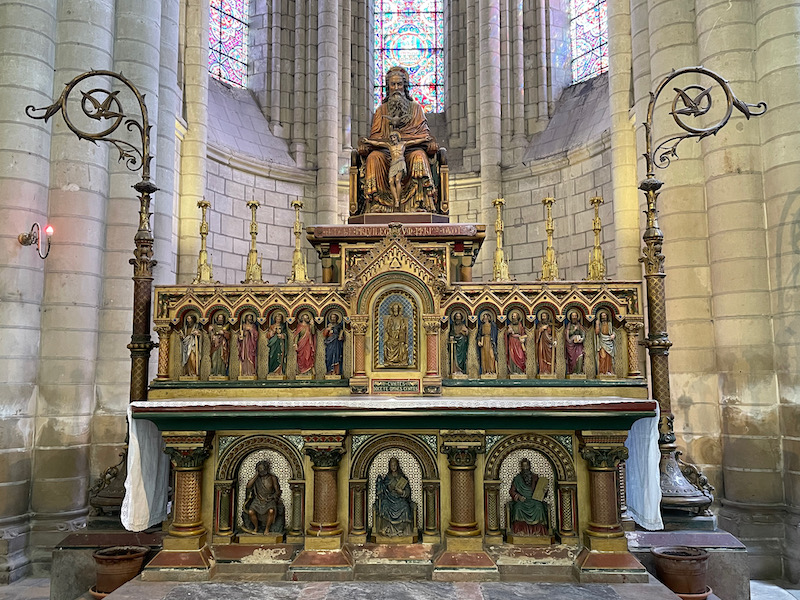
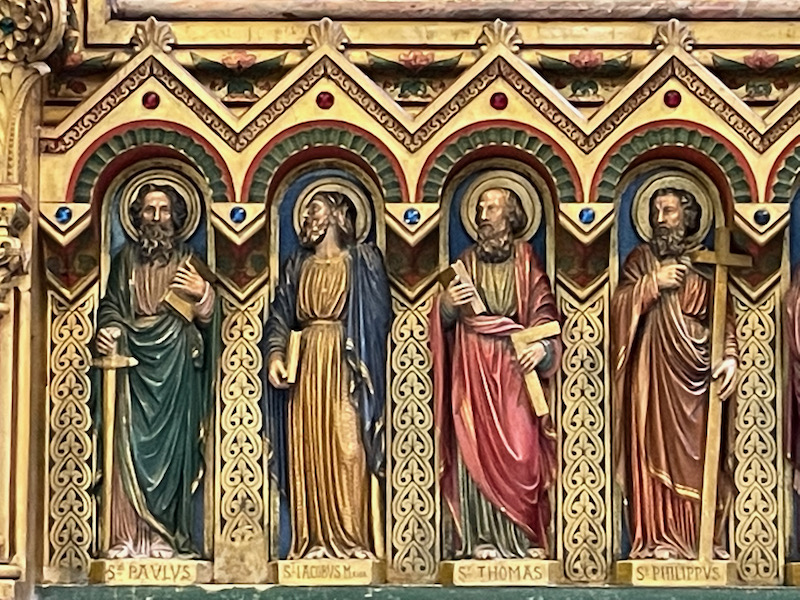
The preaching pulpit is from the 19th century has numerous sculptures. There is also a 15th-century medieval pieta whose colors were mostly erased by the floods of the 20th century.
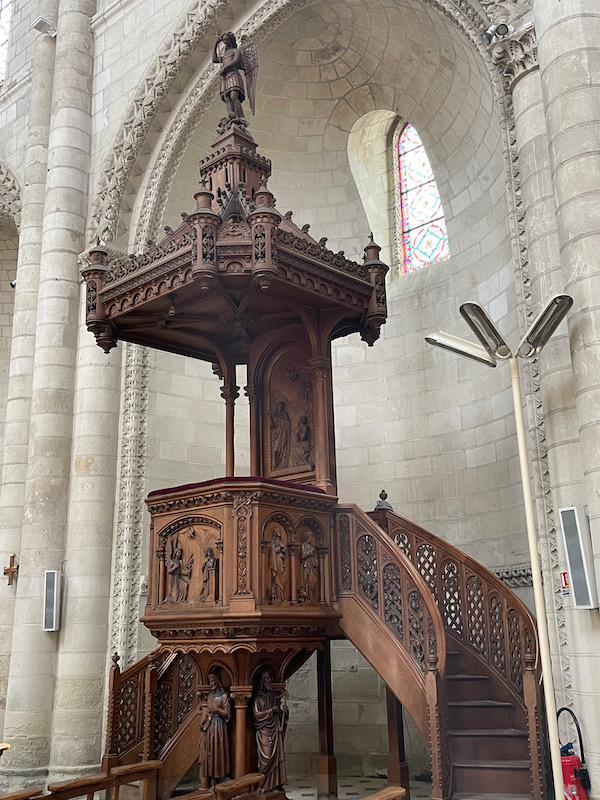
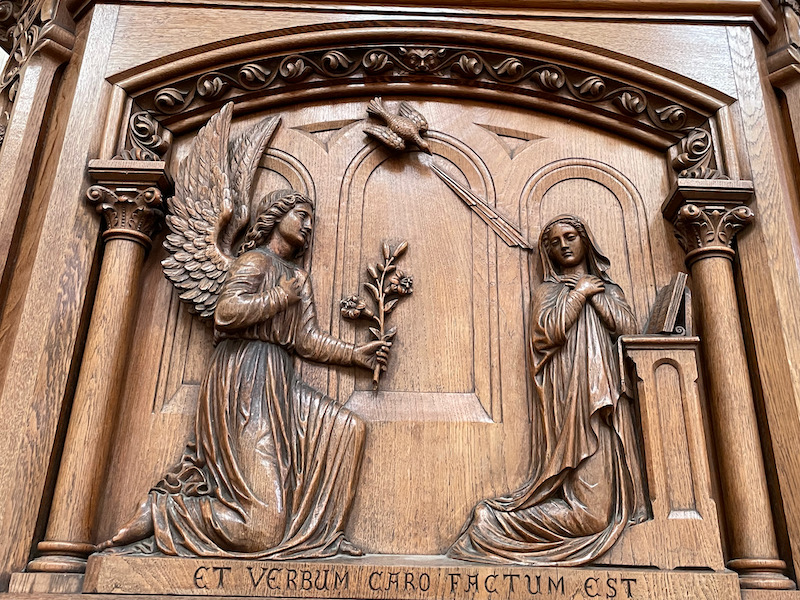
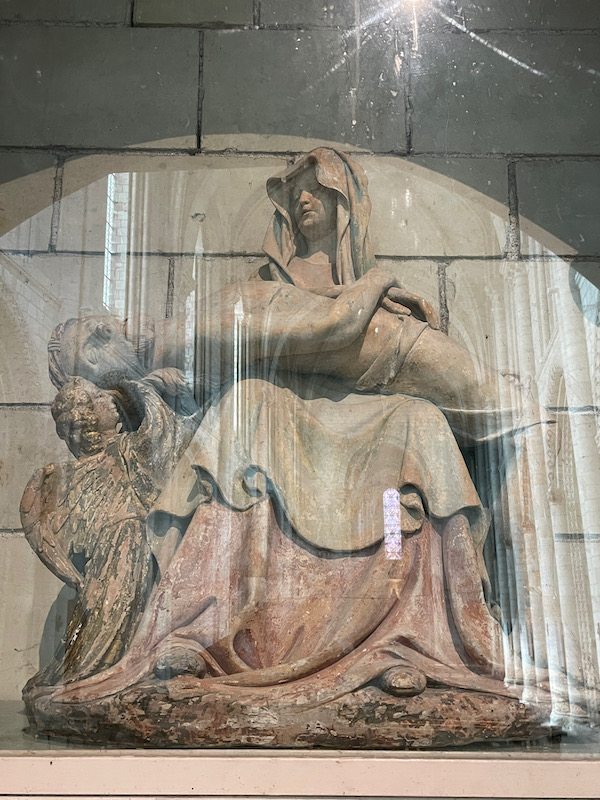
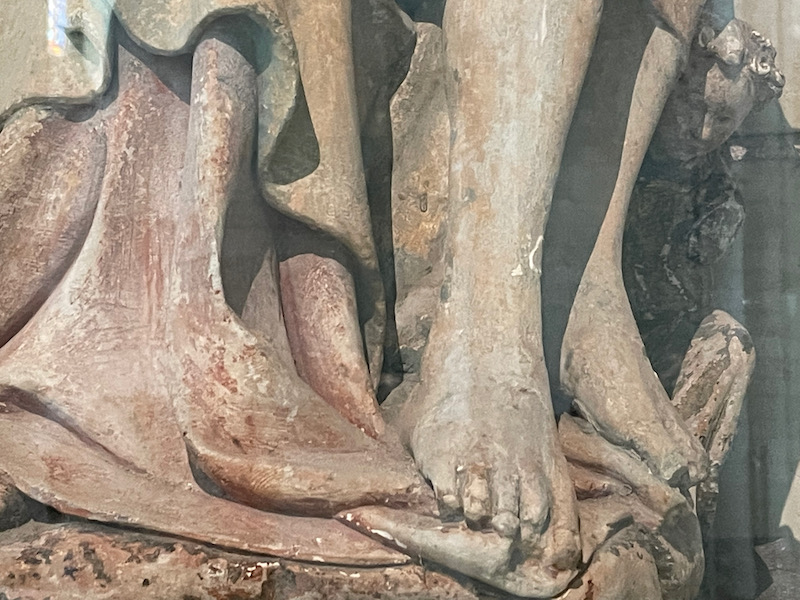
The majority of the stained-glass windows in the nave were destroyed during WW II. The first level now has modern stained-glass windows but those in the choir were created around the years 1865.
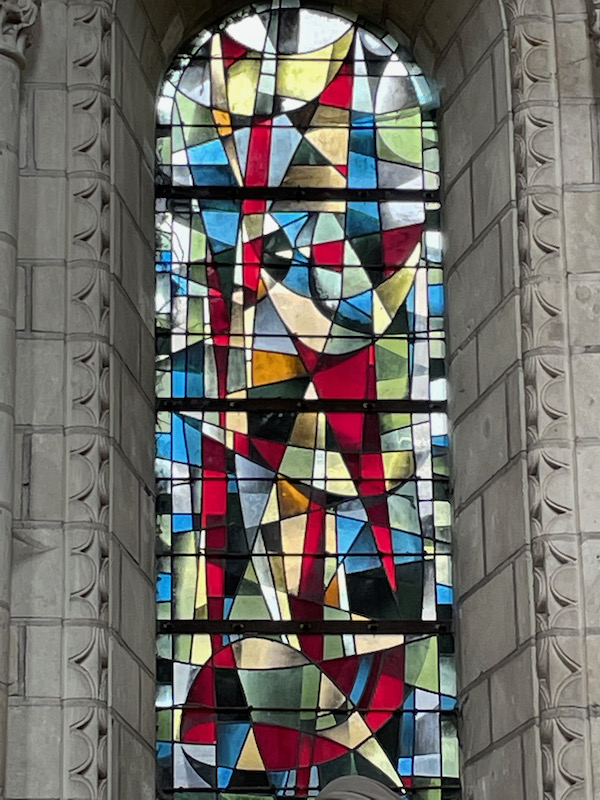
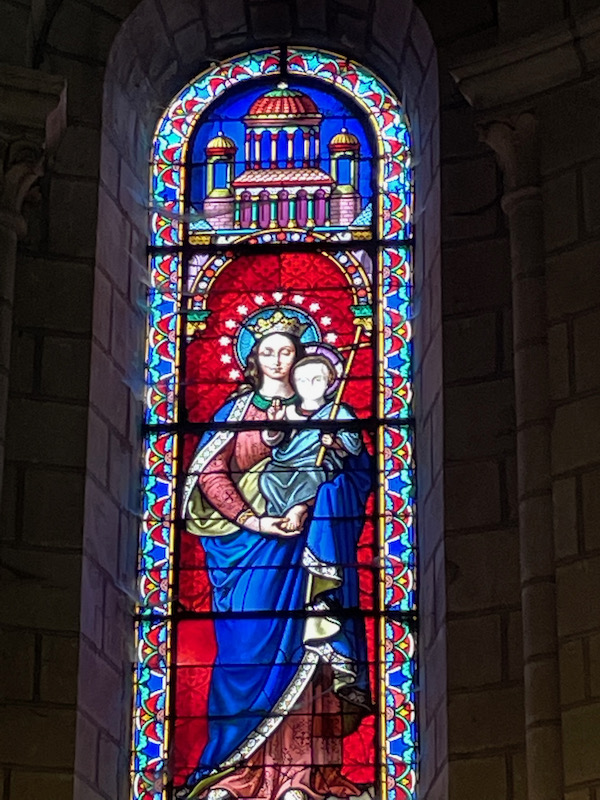
The Greniers Saint-Jean d'Angers was built in the end of the 12th century. Initially a mill and grain storage, the mill was ruined and replaced in 1824. In 1561, part of the building was rented to the Protestants to have public sermons there. The great epidemics (like in 1598) forced the sick to be housed here. It seems to now be an event space that can be rented.
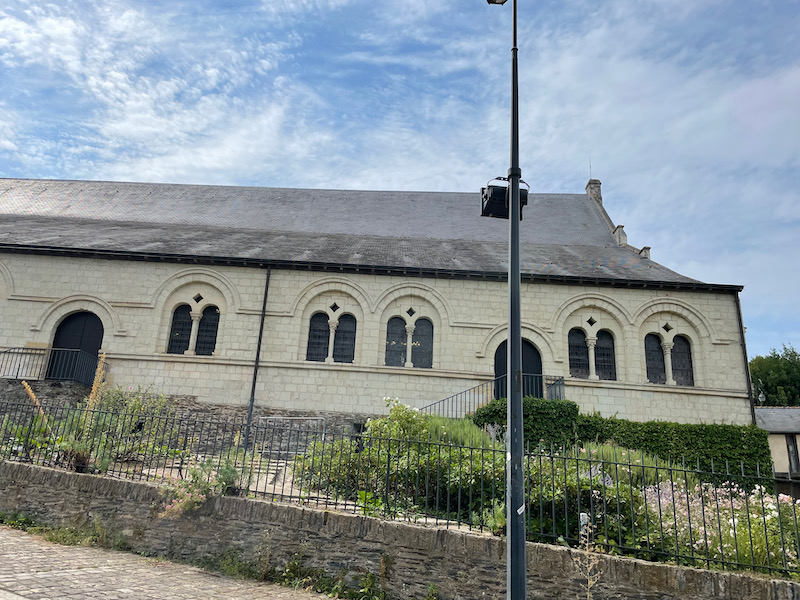
The Ancien Hôpital Saint-Jean was built in 1175. Thehe hospital was initially run by clerics before being taken over in the 17th century by the bourgeoise. It could accommodate up to 500 patients but lost its' function after the construction of a new hospital. It was turned into a museum in 1874 but then was not used until 1967 when it became the tapestry museum. It is Gothic in style and several medieval buildings still remain. The greniers (just above) were originally the food reserves for this hospital. The 17th century apothecary and cloisters remain.
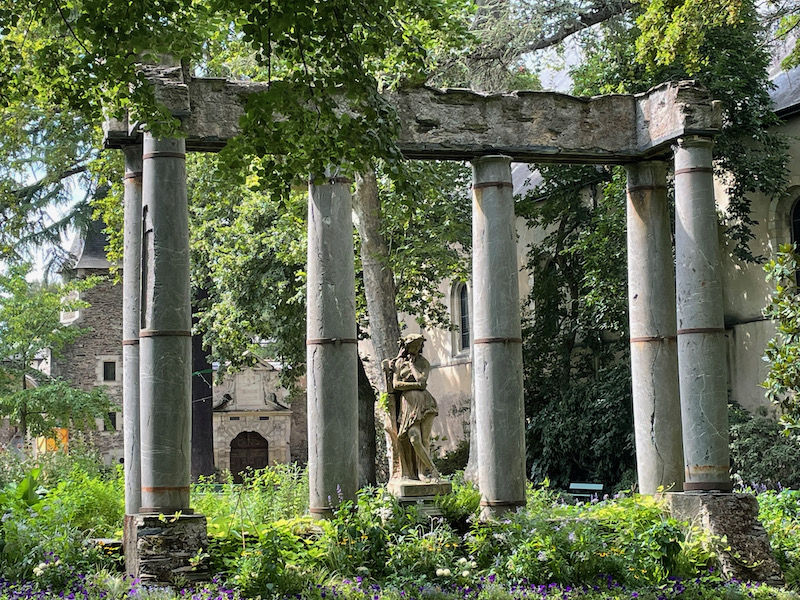
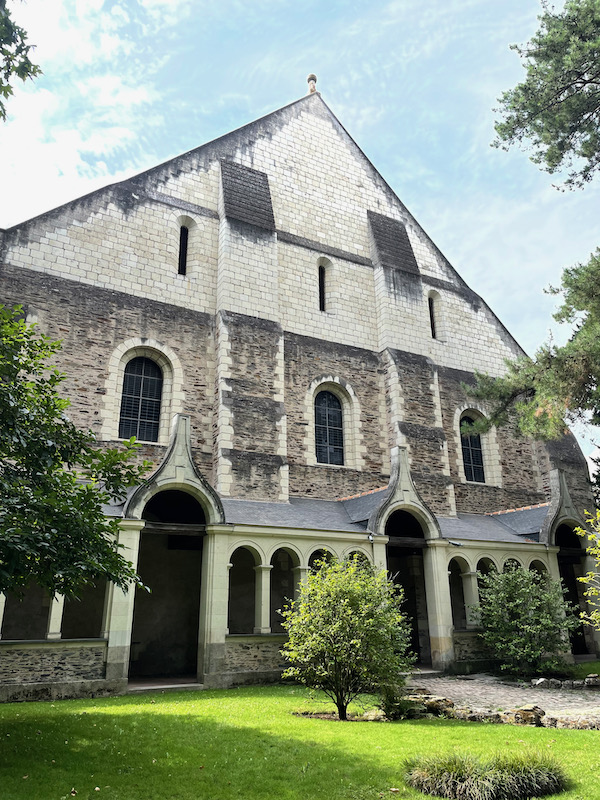
Tour des Anglais, a remaining part of the medieval city walls. It is one of the rare vestiges of the third enclosure built in the 13th century to protect the city. It owes its name to the chain that was stretched (upstream) at night between the two banks to prevent the passage of boats. Another chain was stretched downstream (low chain).
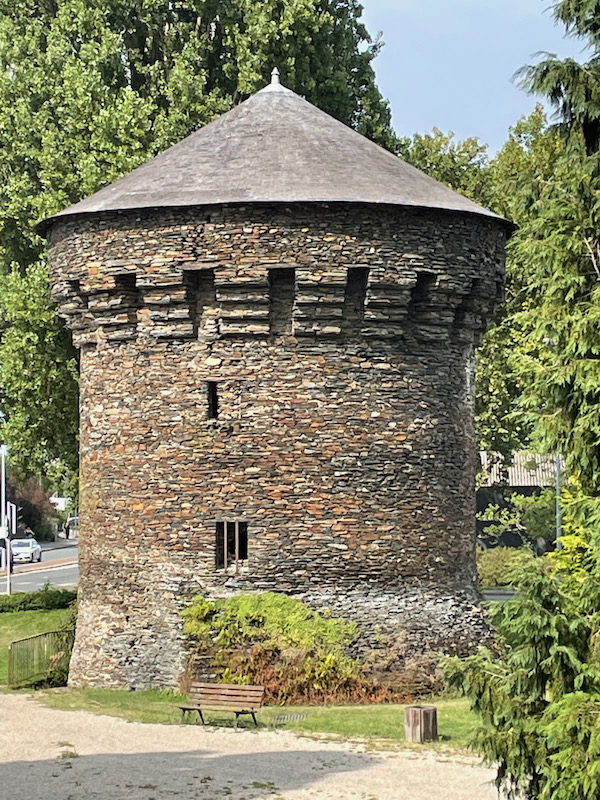
Just up from the castle, there are these houses that are built on the cliff, and in some cases, into the cliff.
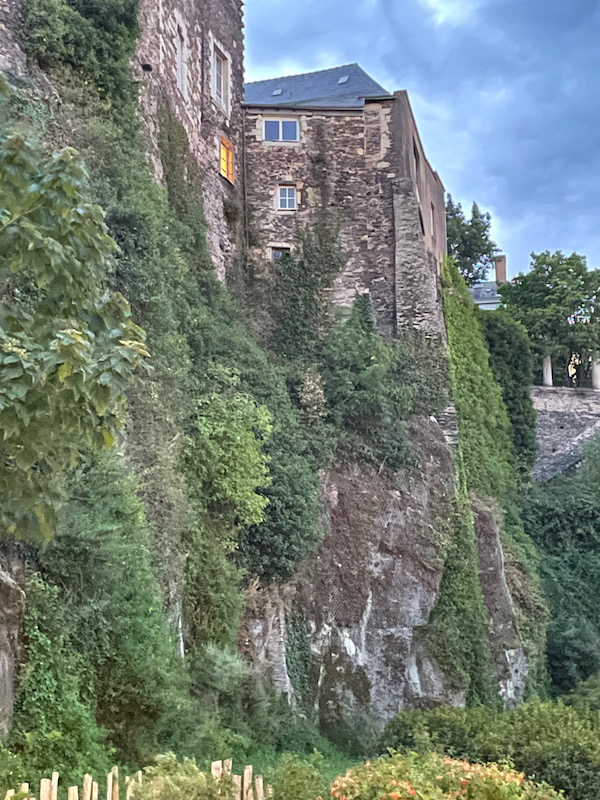
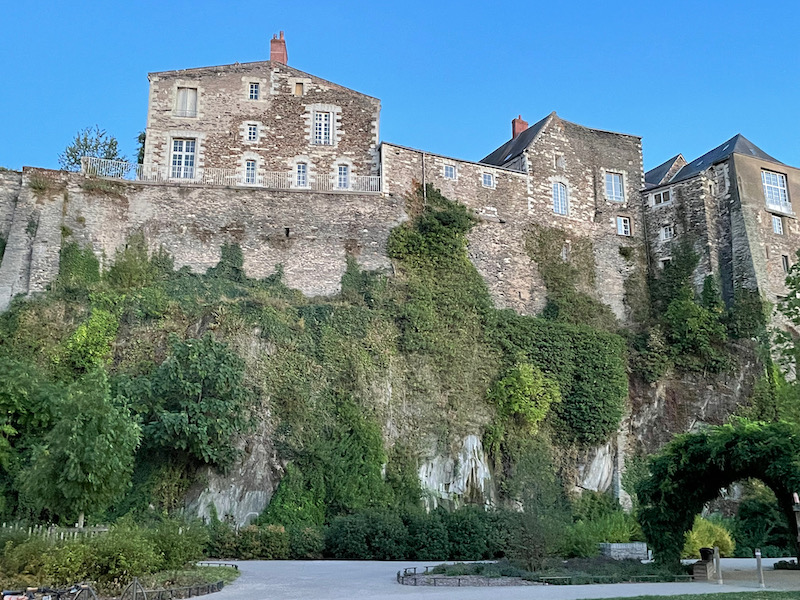
The Tower Saint Aubin was the old bell tower of the oldest Anjou Abbey, founded in the 6th century and destroyed during the Revolution. It dates from the 12th century, and it also served as a watchtower. While the Abbey was destroyed during the Revolution, the tower was not because it could be used as observation post. An interesting bit of trivia: in 1822, it was sold to a merchant for the manufacture of lead shot. The way they were made is to take the molten lead and drop it from the top. They would become round while falling, and they would land in a cooling tray filled with water at the bottom.
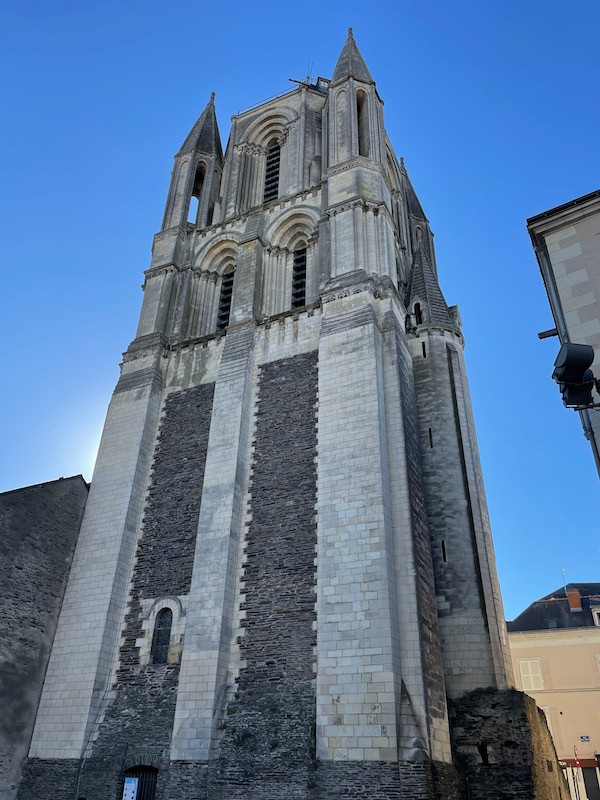
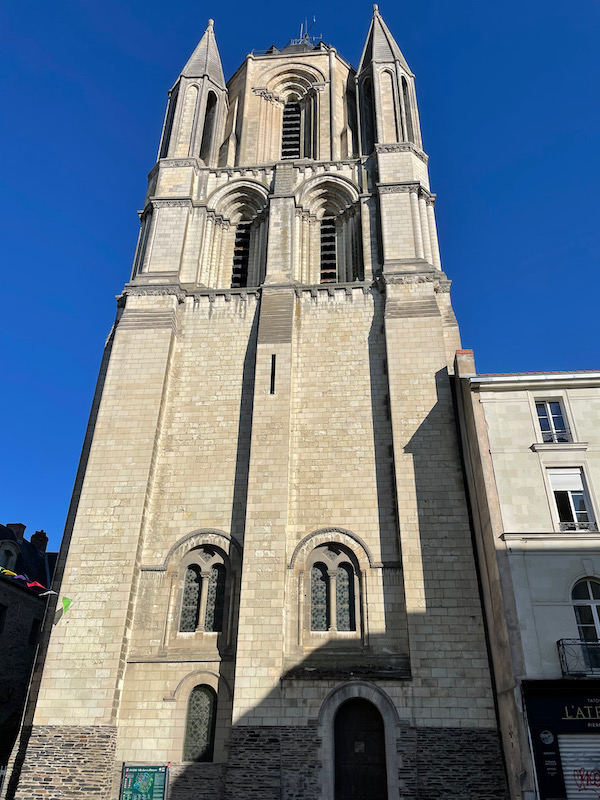
Built in 1929 as an apartment building, the "Maison Bleue" was the first building with an elevator in the city and is known for having the large façade covered with mosaic in Art Deco style. Entirely covered on 8 levels, with porcelain stoneware and enameled tiles, the mosaic forms a gradient. From the ground floor to the top floors, the color changes from a plain beige ocher to an ultramarine blue, with the ornamentation following the same progression. The shops on the ground floor have been well-integrated.
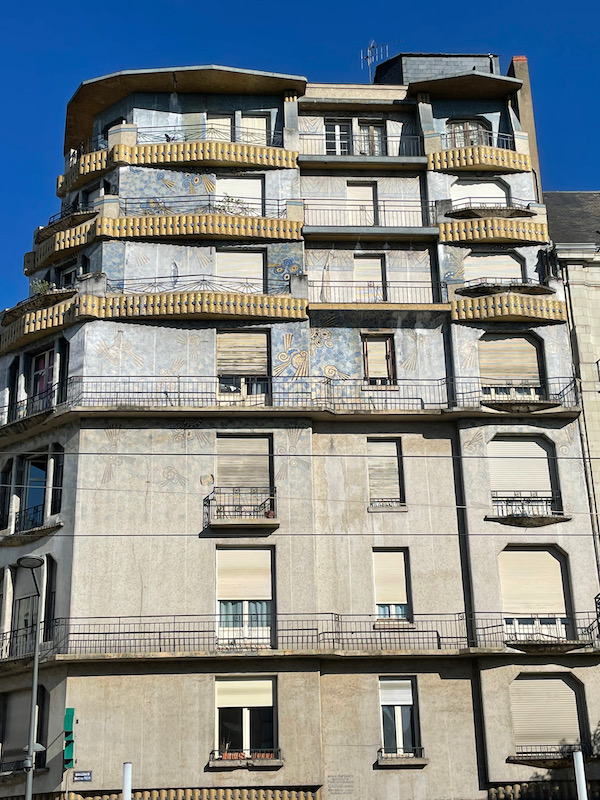
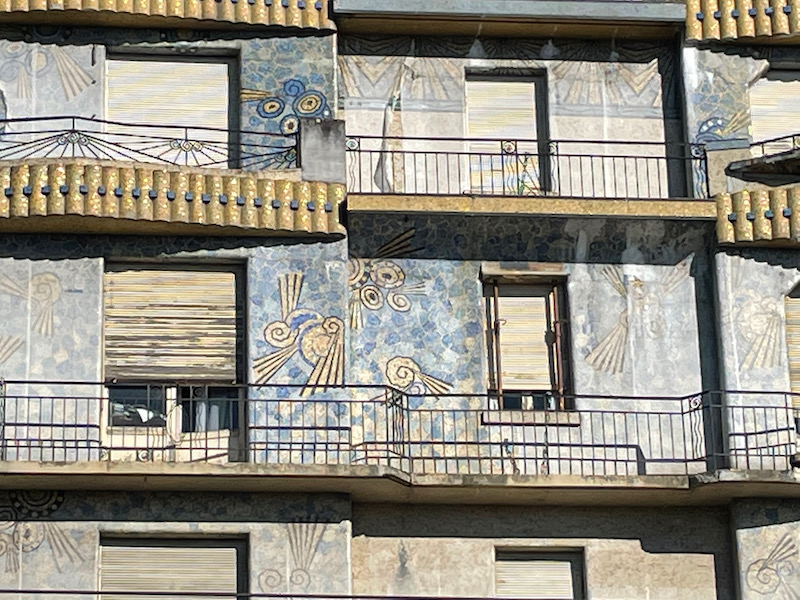
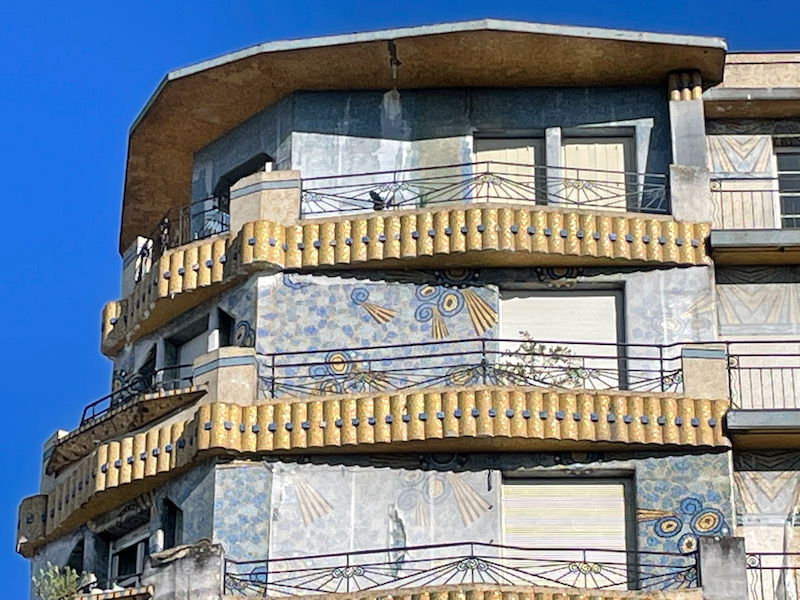
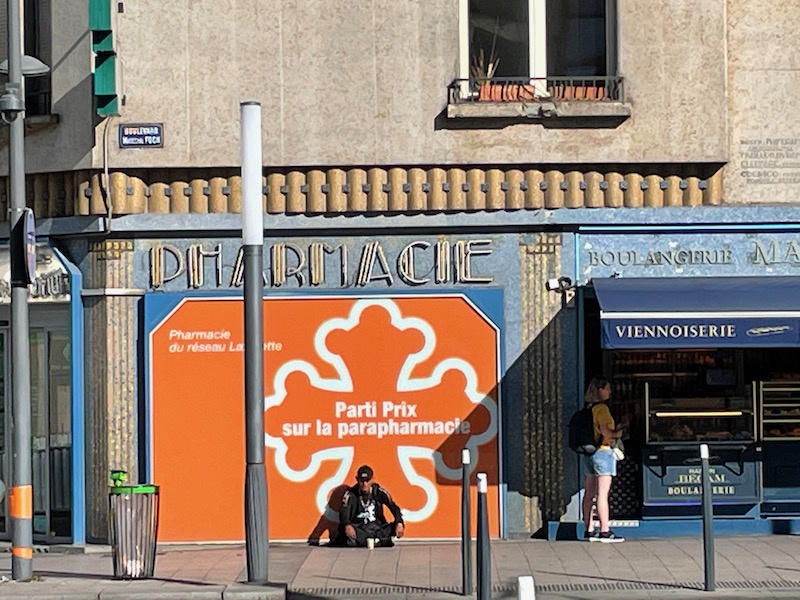
Le Jardin du Mail was built in the 17th century and gets its name from a game that used to be place between Marie de Medici and the future Cardinal de Richelieu. It has a really lovely fountain, with frogs that spit the water, and well-manicured lawns and flower beds.
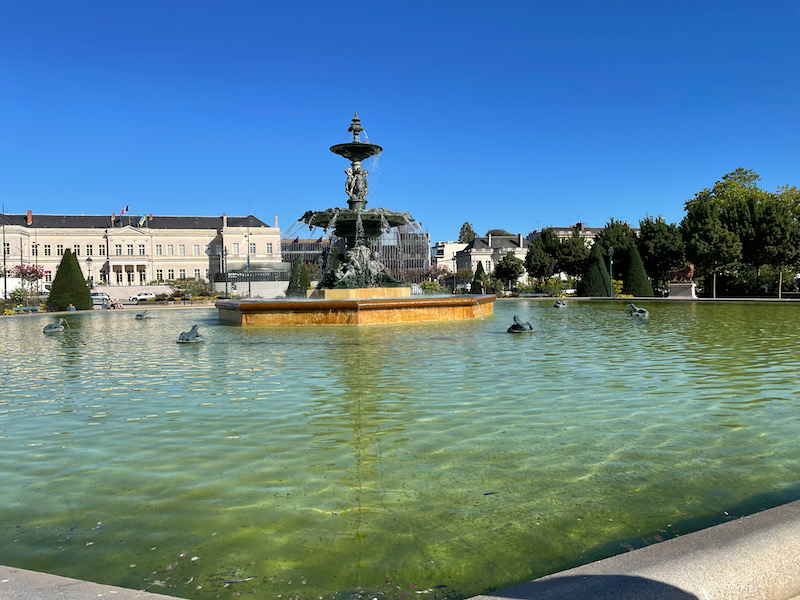
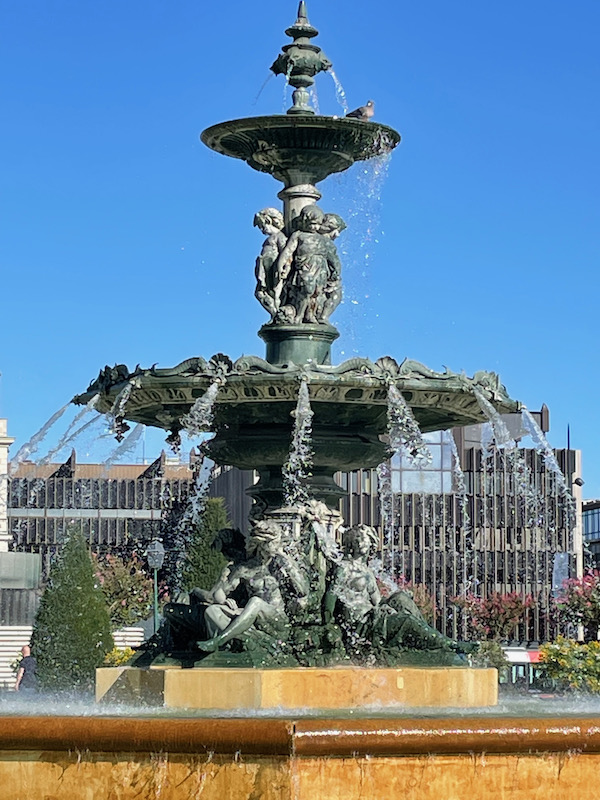
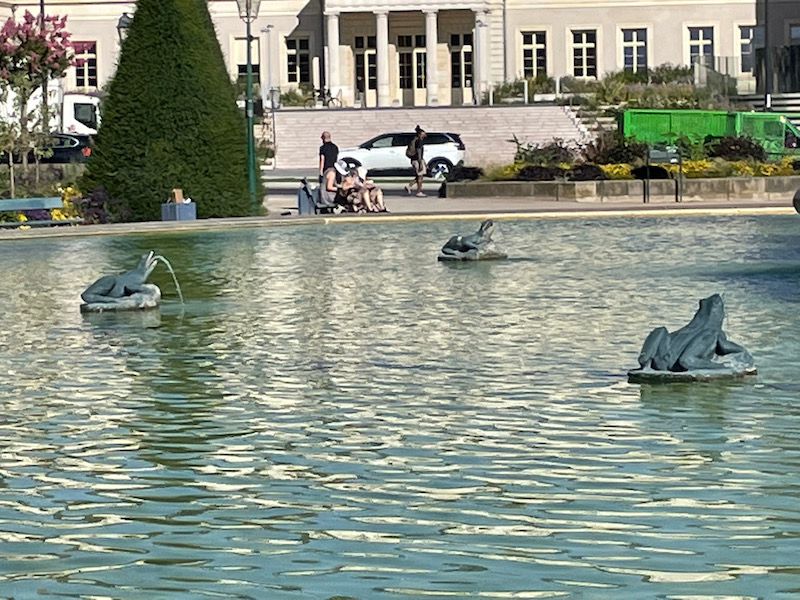
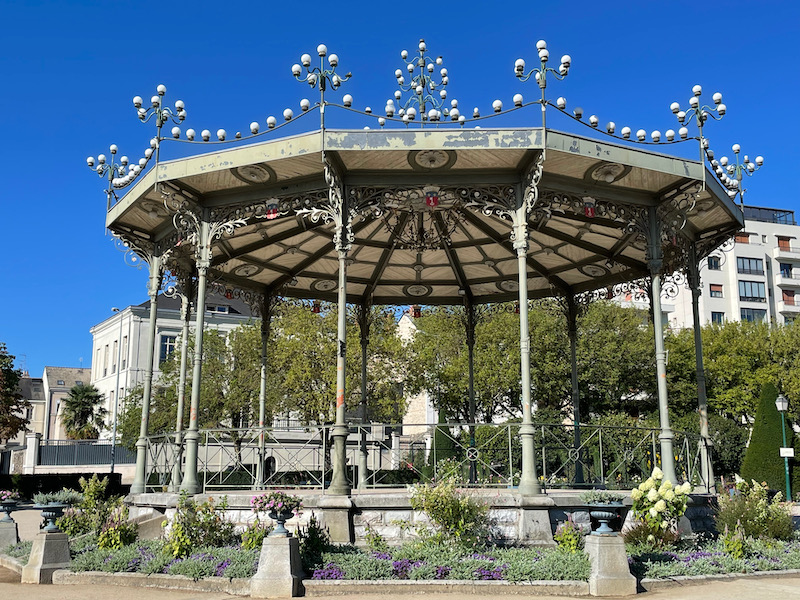
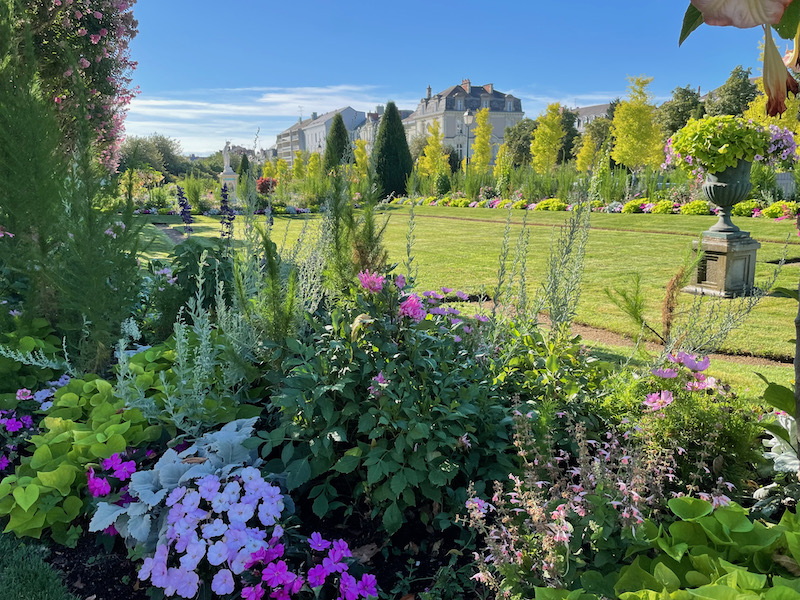

The original Église Notre-Dame des Victoires was built in the 17th century but a new church was planned (and financed) by a parishioner who died in 1883. Unfortunately, there was a long legal process and the plans had to be reduced, including not building a bell tower. It was built in a Roman-Byzantine style and finally completed in 1904.
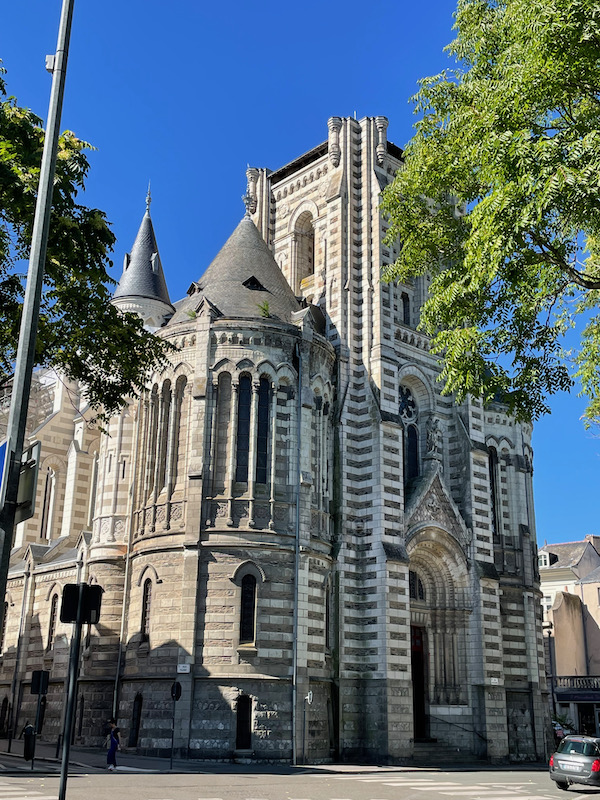
The nave has five bays separated by fairly thin cylindrical columns, extended by three other bays in the choir. Above the chapel that houses the baptismal font are a set of coats of arms, carved in stone. The stained-glass windows of the choir date from the 1930s and 1940s.
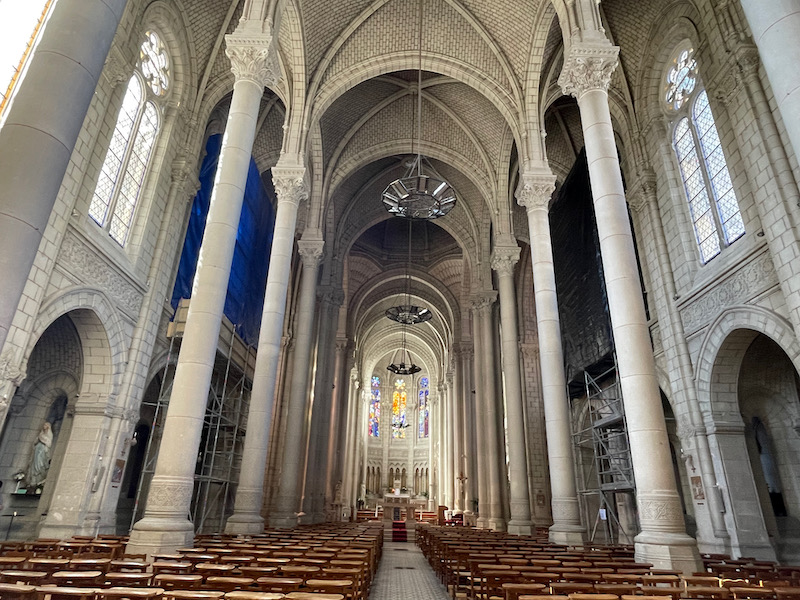
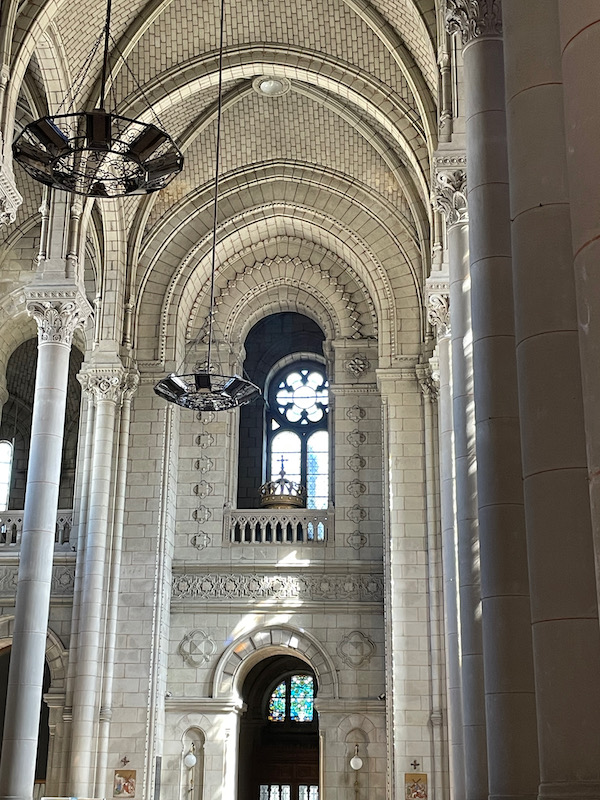
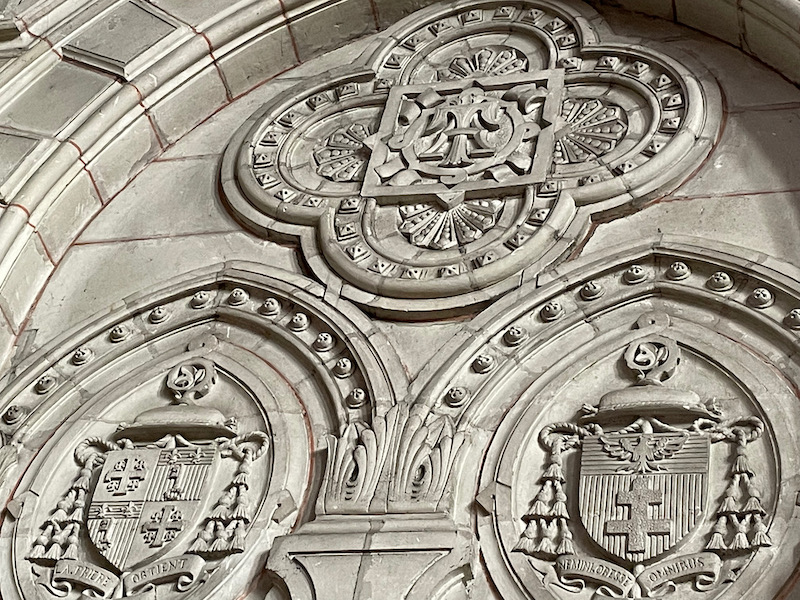
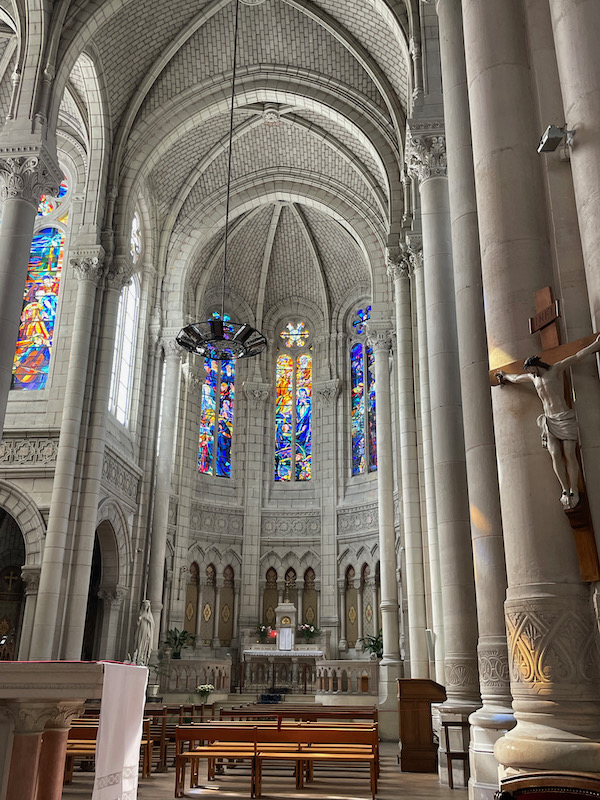
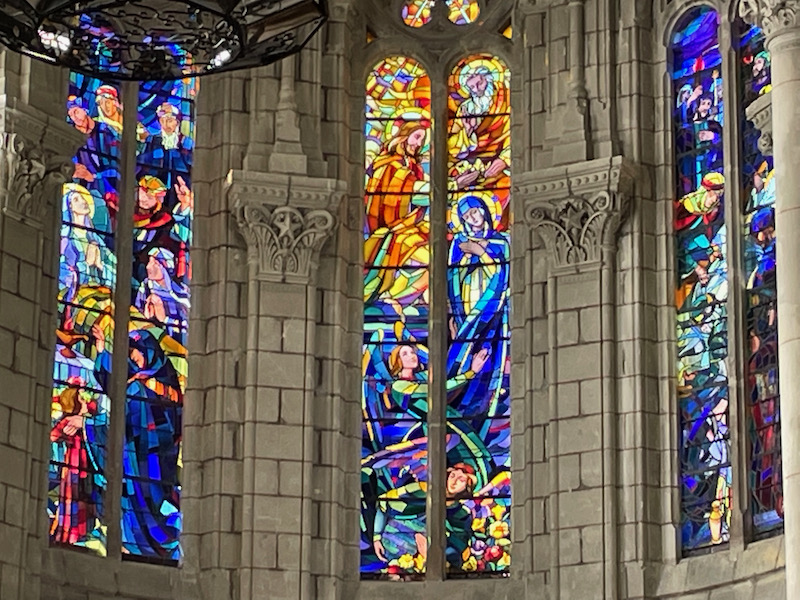
I've seen a lot of stained-glass windows, and these probably are some of the most colorful! This first window (2 pictures) is in the right crosspiece of the transept and is entitled “Presentation of Mary in the temple”. The 3rd picture is in the left crosspiece of the transept and is entitled “The Marriage of the Virgin”, done by an Angers artist in 1904.
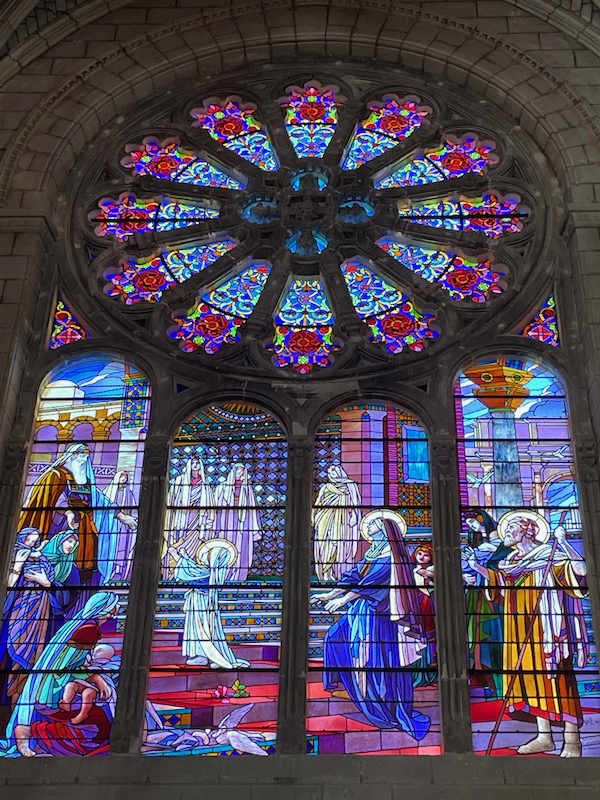
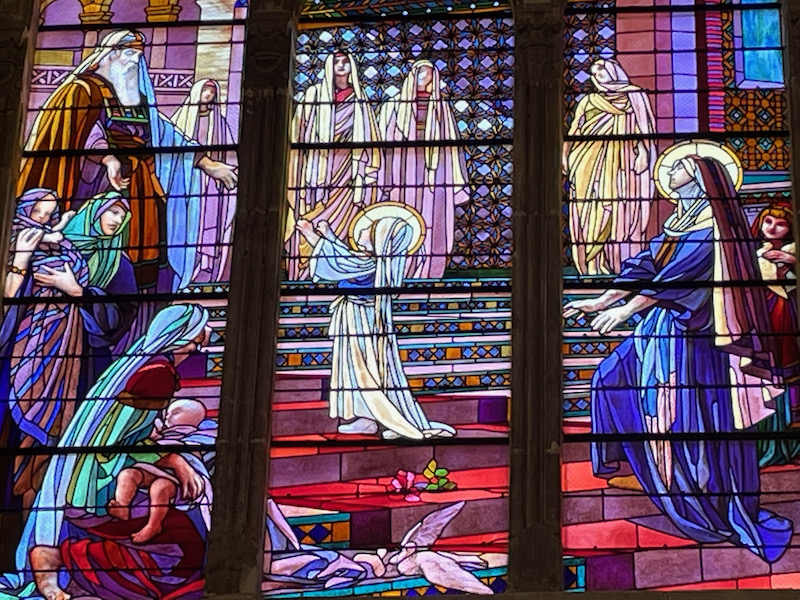
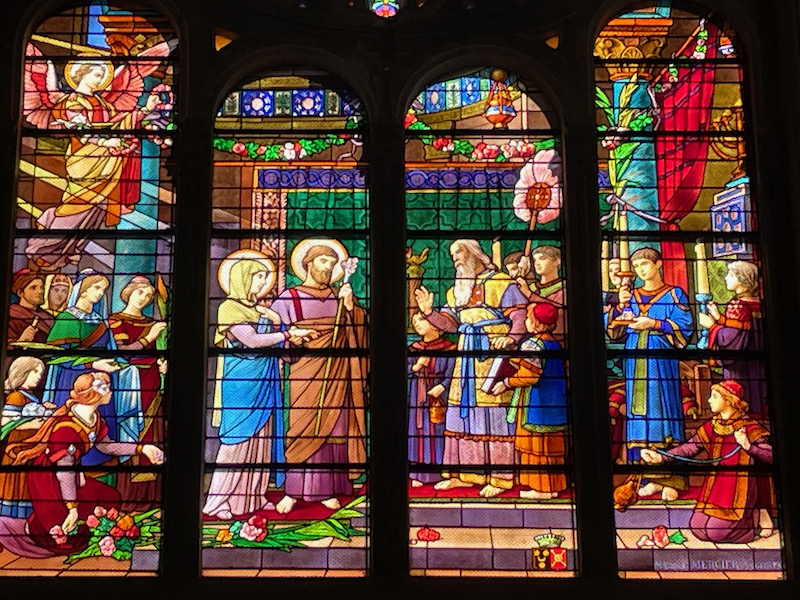
And then a few other stained-glass windows
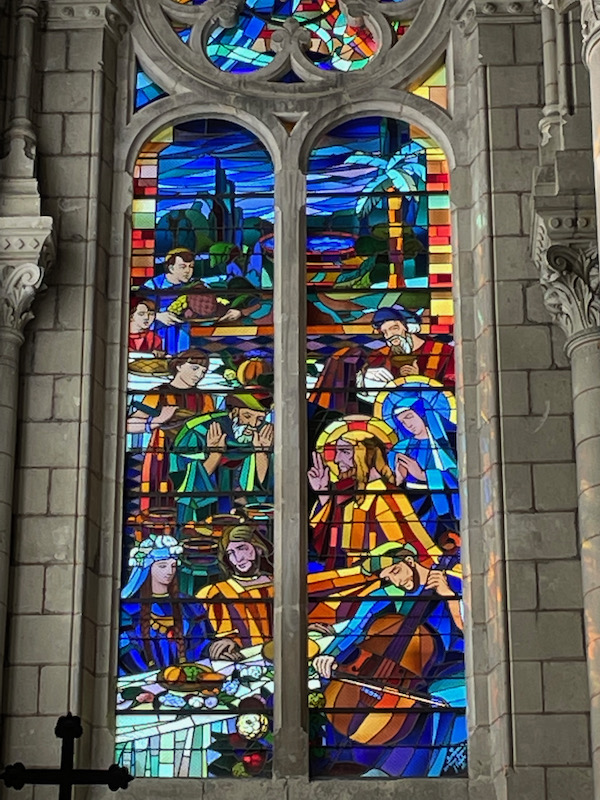
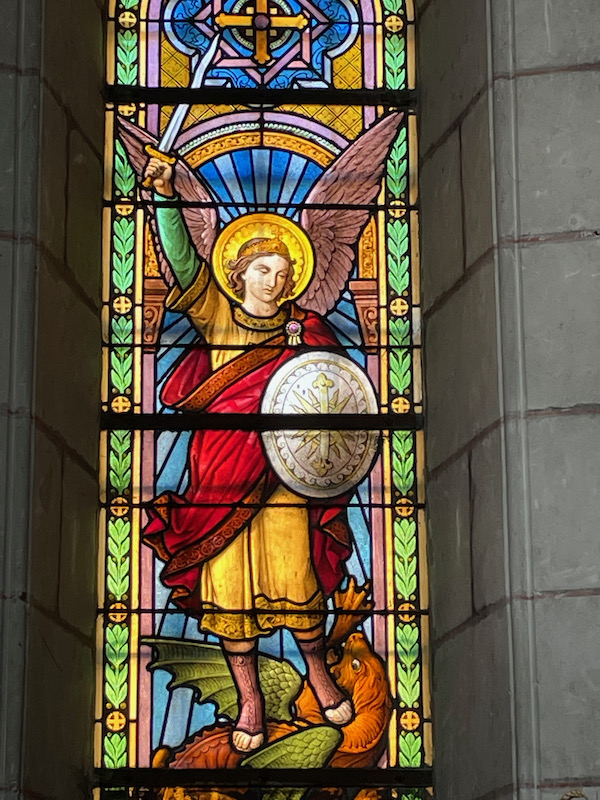
A voluminous baldachin that encased the high altar was removed as part of the conciliar reform of Vatican II. Architecture: Its two-tone exterior appearance results from the association, in horizontal courses, of freestone and schist rubble.
Walking around town, we saw this storefront, for a kids bookstore, which is one of the best storefronts I have ever seen!
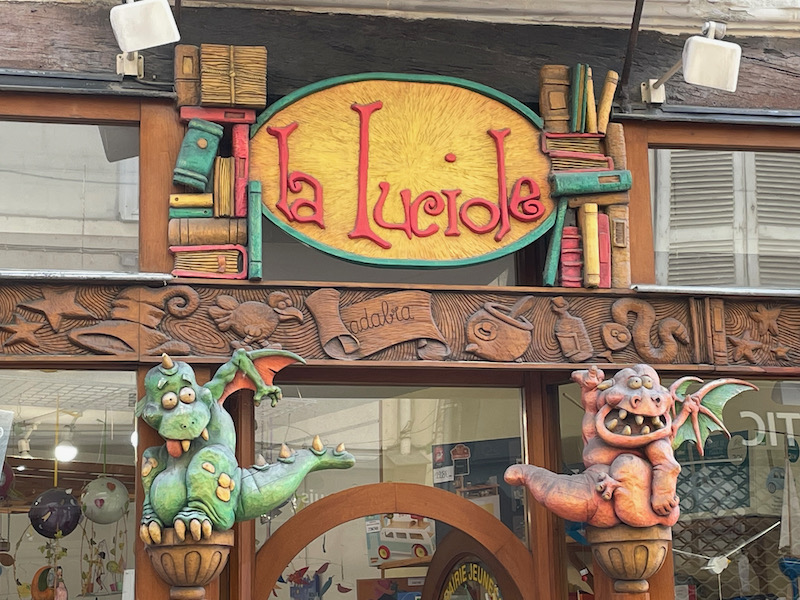
Right in the center of the old town, there are lots of really nice half-timbered houses with nice wood carvings. Some of these houses date from around 1400.
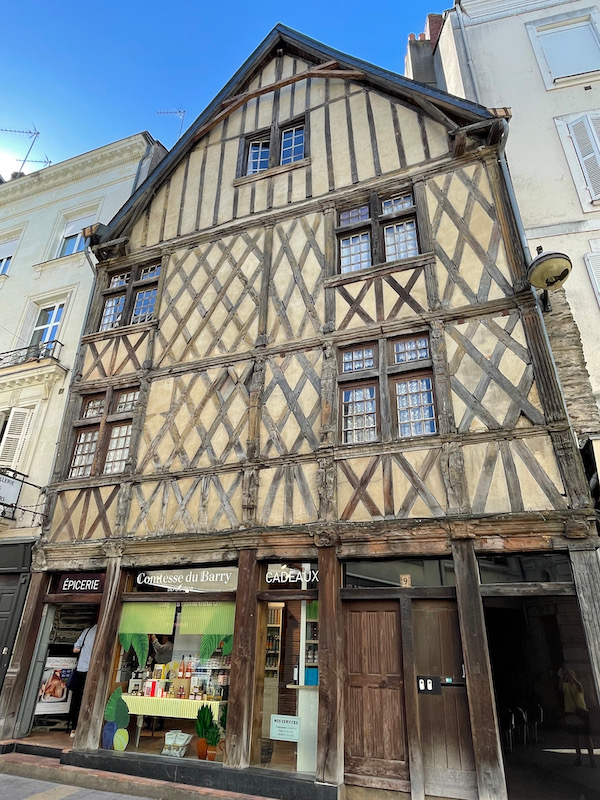
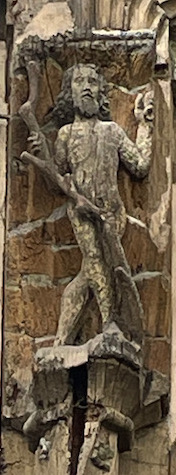
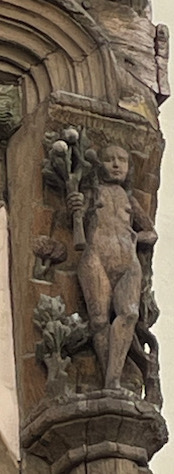

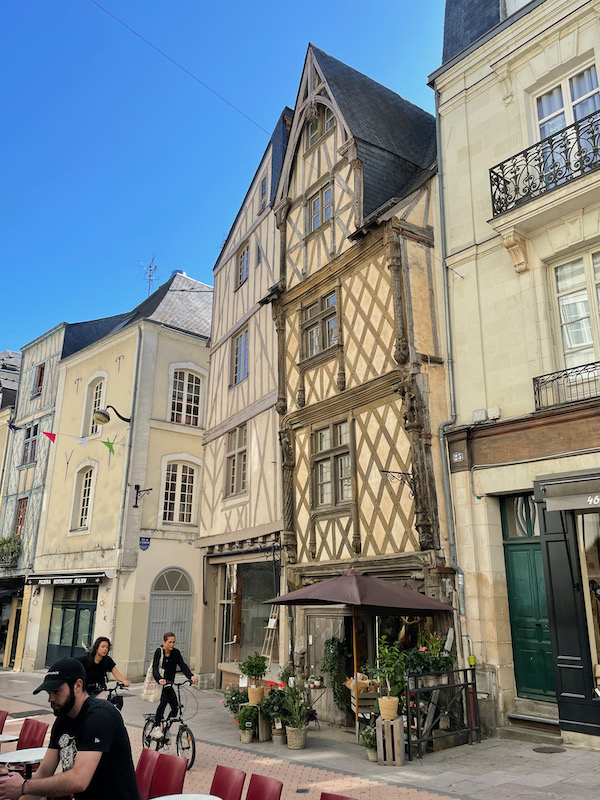
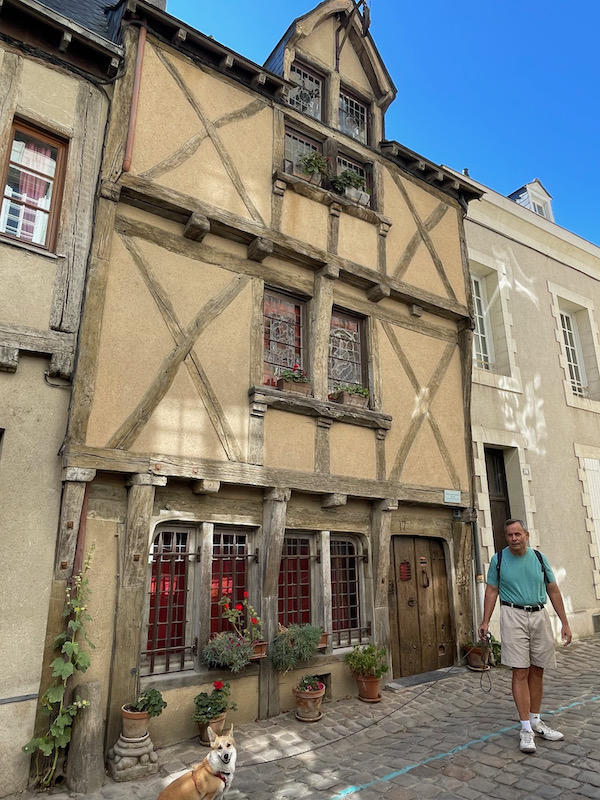
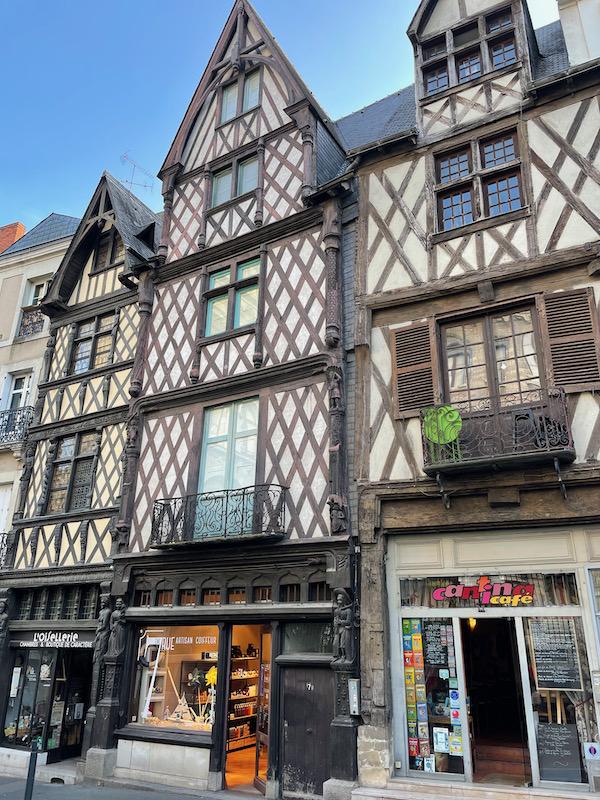
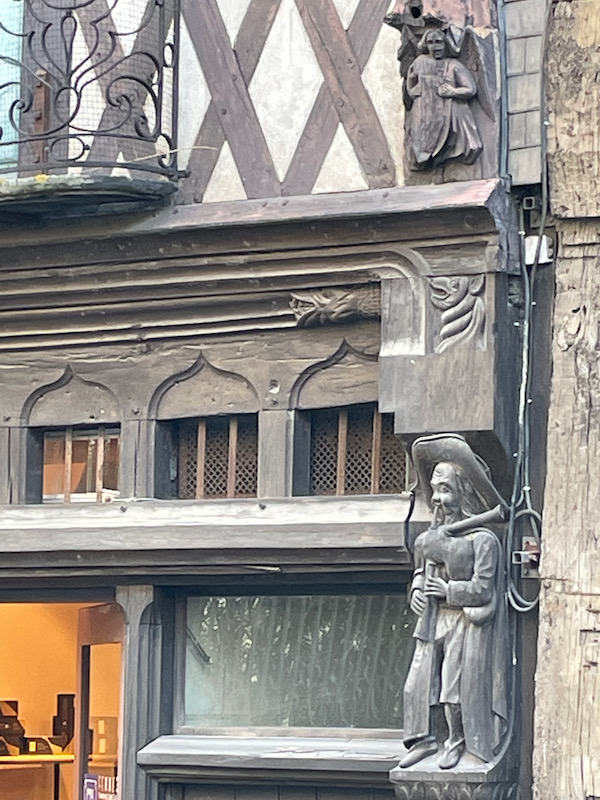
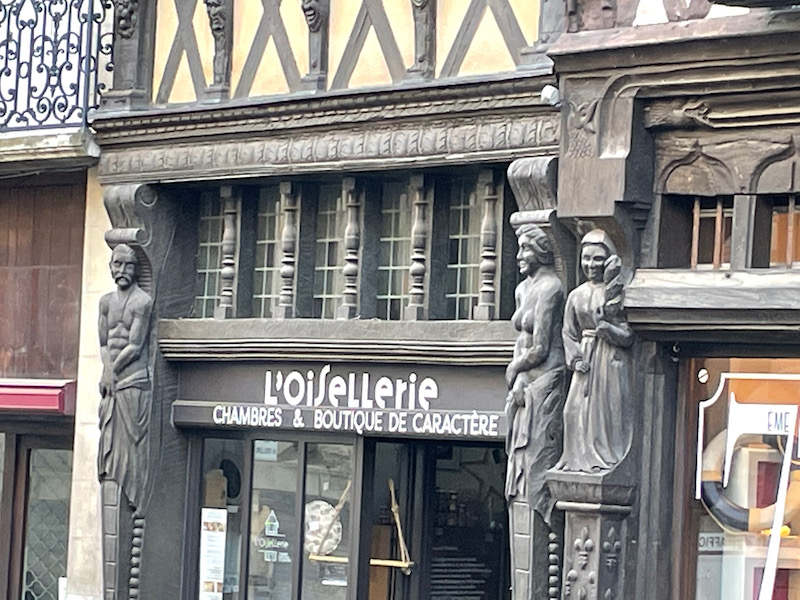
Maison d'Adam, sometimes called the house of Adam and Eve, is another half-timbered house in the heart of the city. It was built around 1491 and is really tall (6 floors!). There are various wooden sculptures on the columns, which shows how wealthy the owner would have had to have been. One of my favorites is the last picture, which shows Saint Michael slaying the dragon.
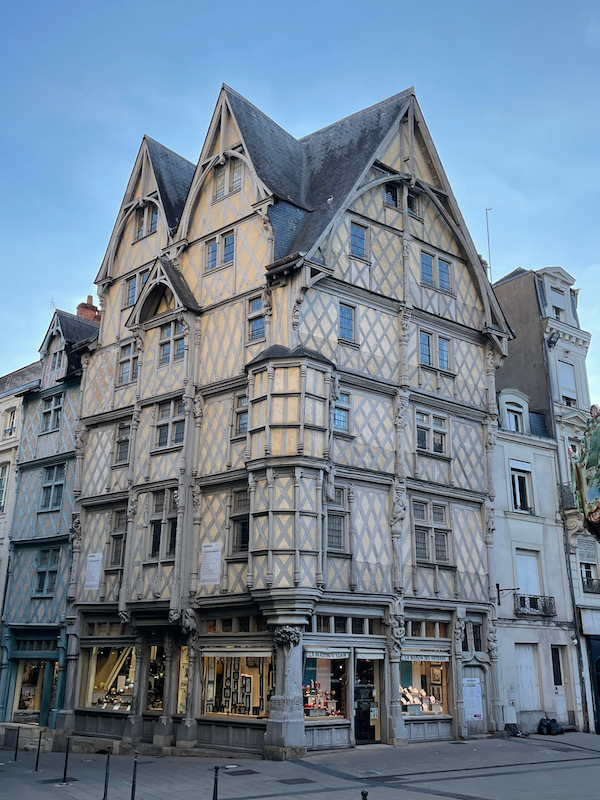
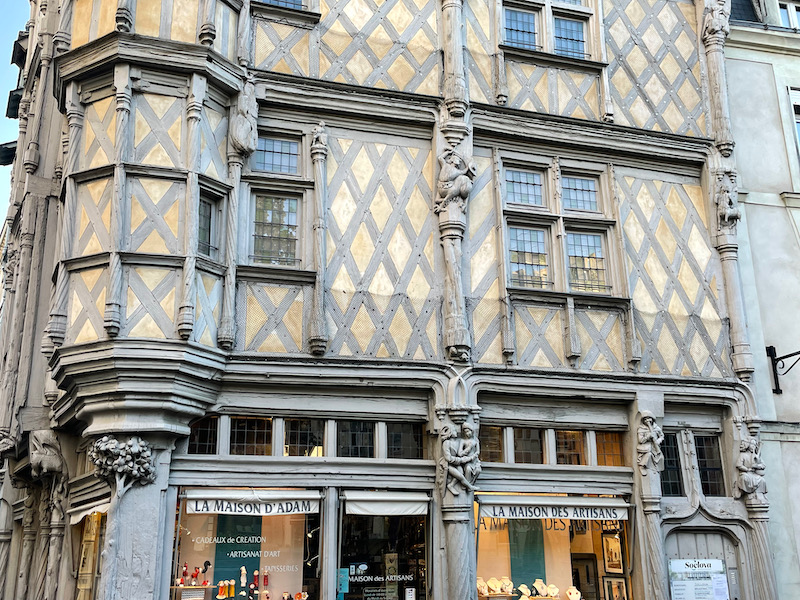
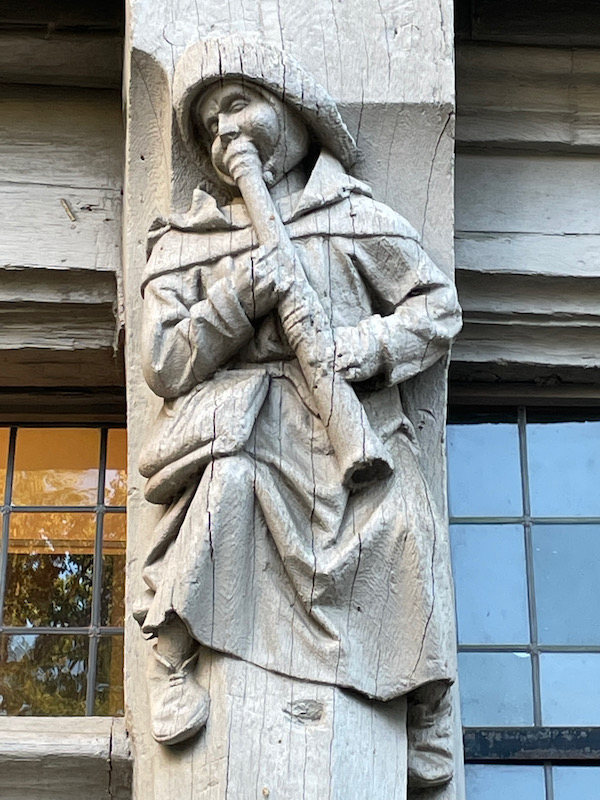
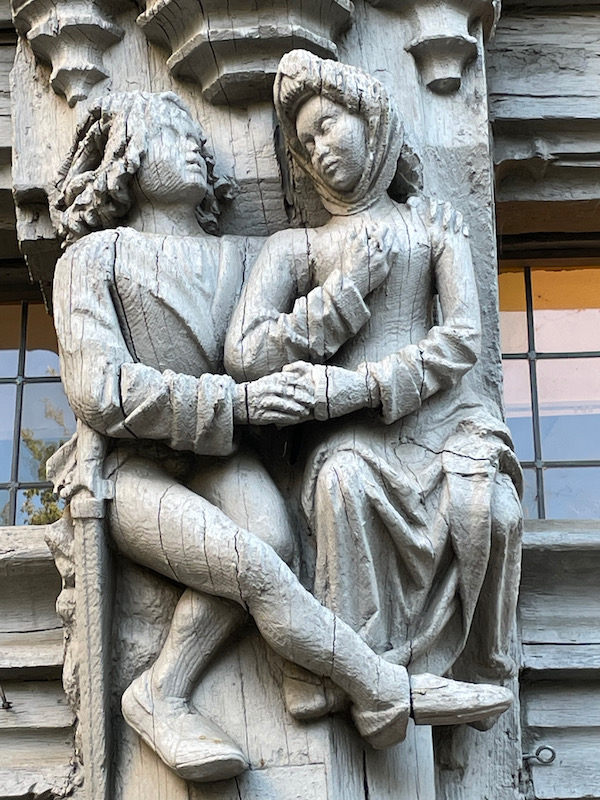
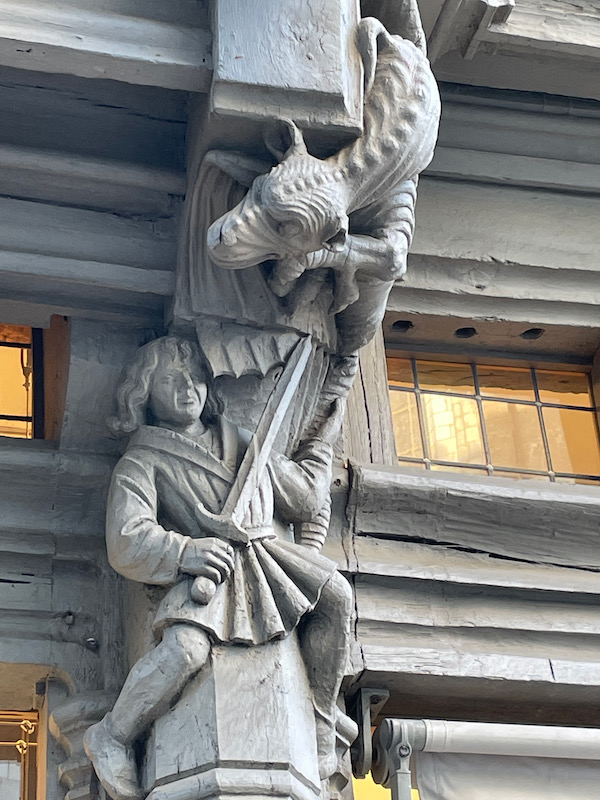
Cathédrale Saint-Maurice d'Angers sits at the top of a hill. It was built between the 12th and 13th centuries, with some of the stained-glass windows dating from the 12th century. The gallery of figures representing knights and companions of Saint Maurice were added in the 16th century.
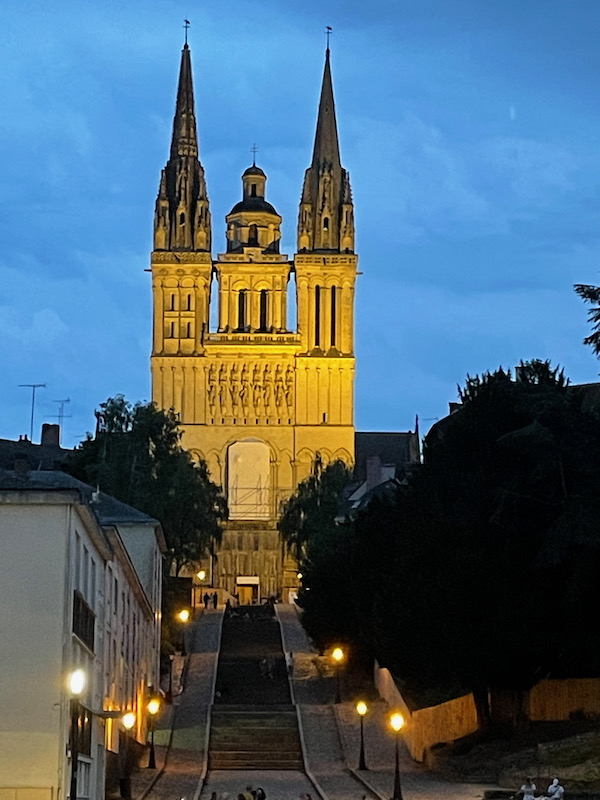
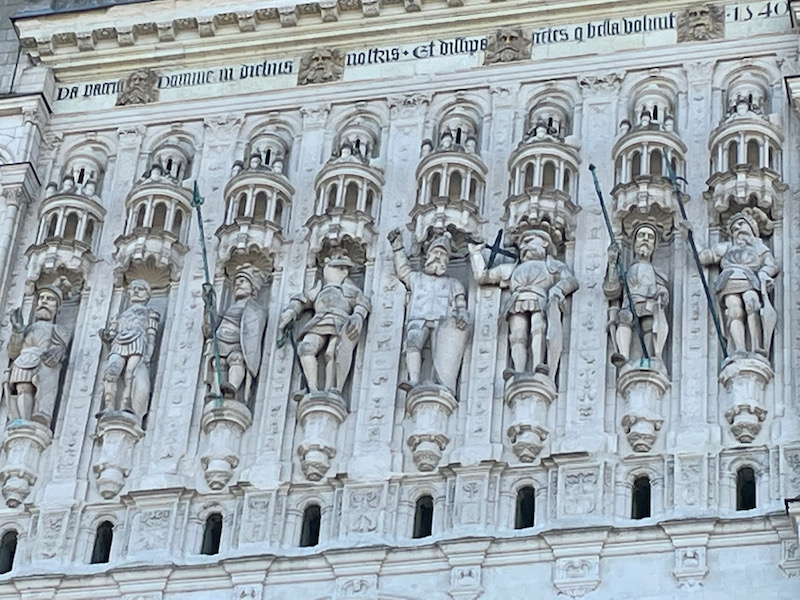
It is a single nave with Gothic ribbed vaults.

The pulpit dates from the middle of the 19th century in a neo-Gothic style, which had come back into fashion at the start of the 19th century. The upper part represents the glorious Church (Father, Son and Holy Spirit) and the lower part illustrates the Church in its earthly struggles. On the left side, is Jerusalem cracking (2nd picture) and then the heavenly Jerusalem (3rd picture).
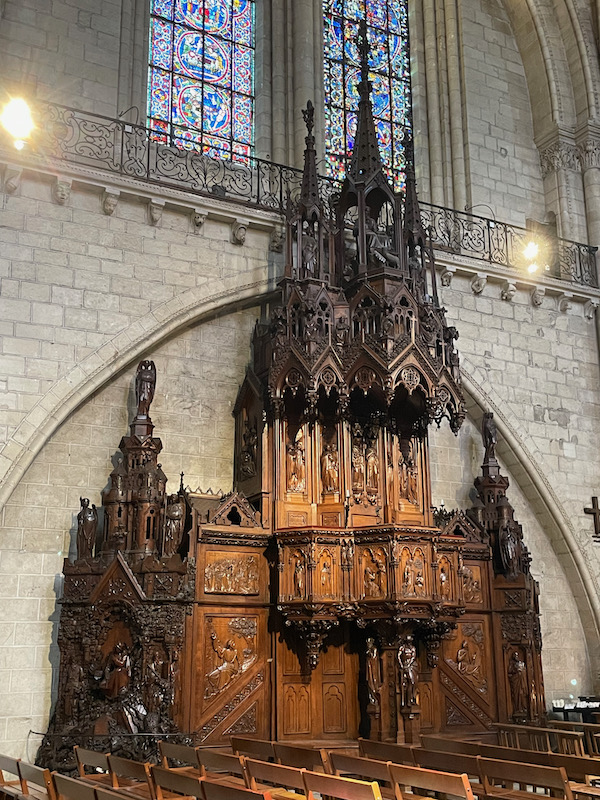
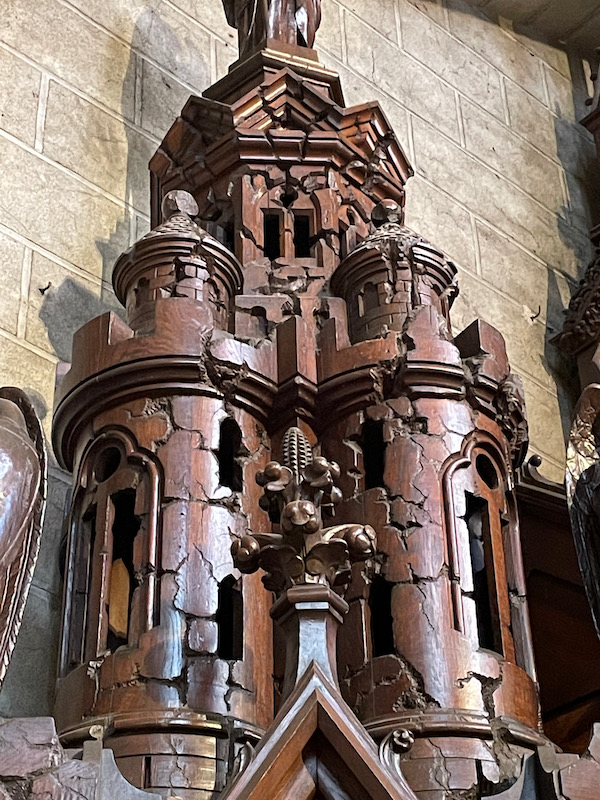

The canopied high altar with its top glory, in gilded wood in the Baroque style, dates from 1758. The baldachin is inspired by the baldachin of Saint Peter's Basilica in Rome and the Church of Notre-Dame du Val-de-Grâce in Paris. The base and the two columns are in marble. The upper part is in oak.
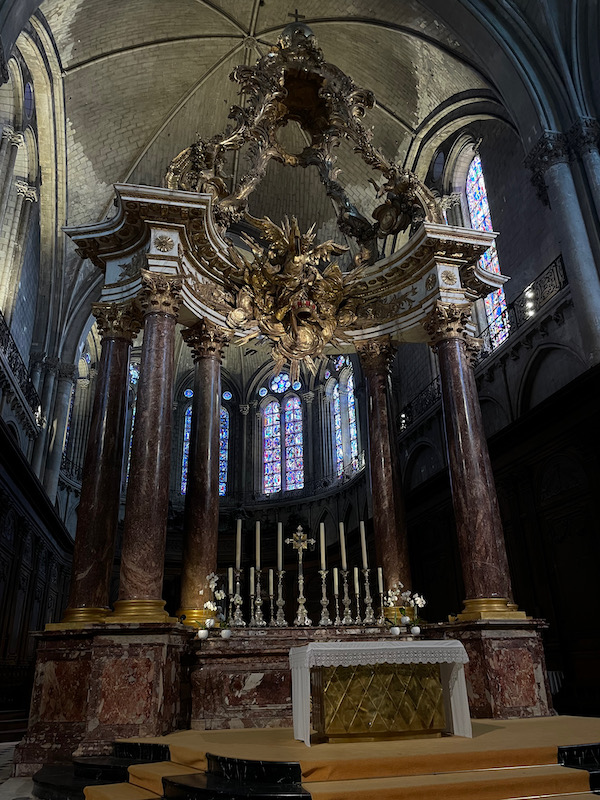
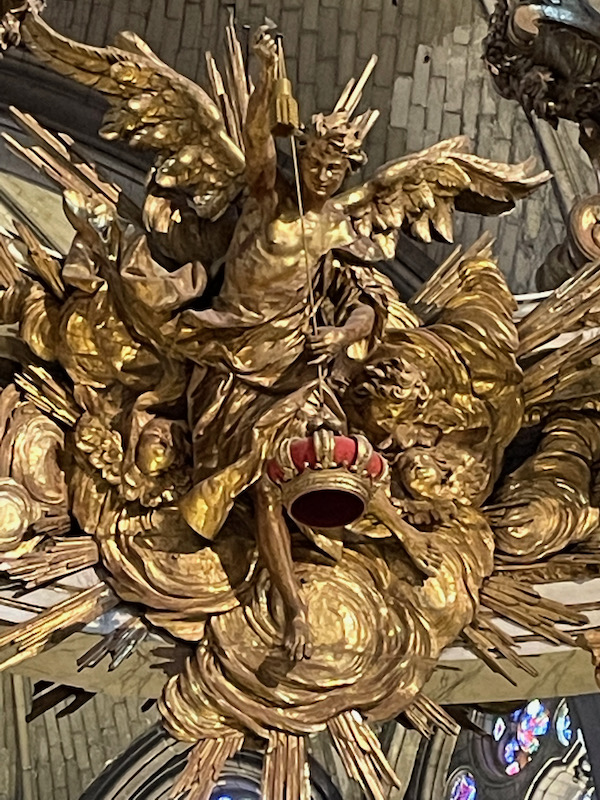
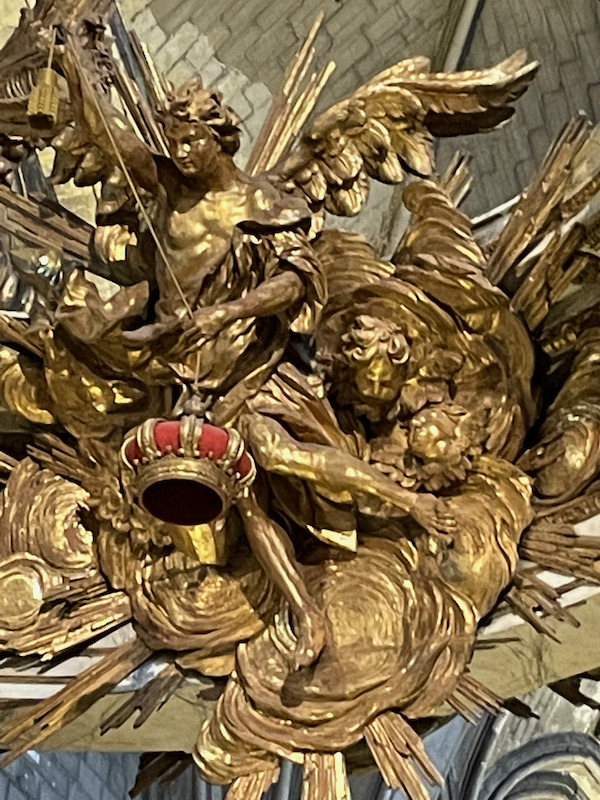
This is the 3rd organ, and the gallery and grand case were carved between 1742 and 1748.
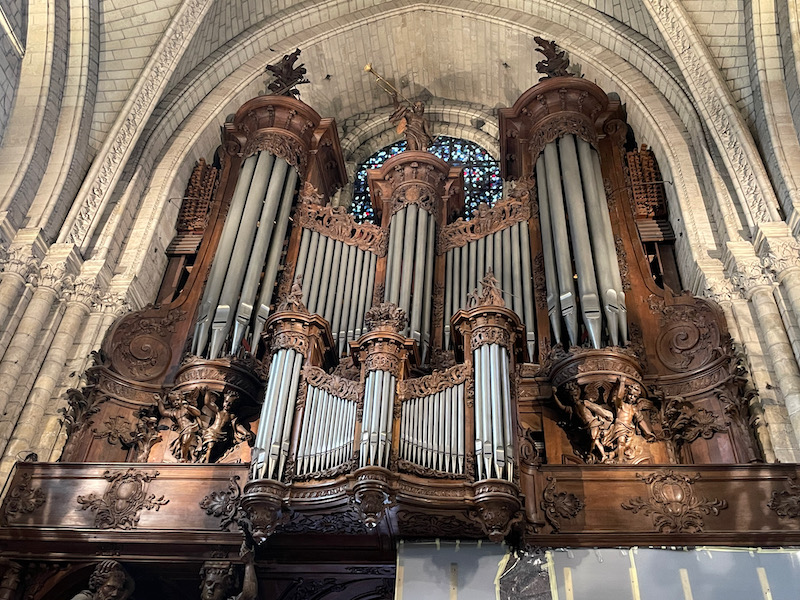
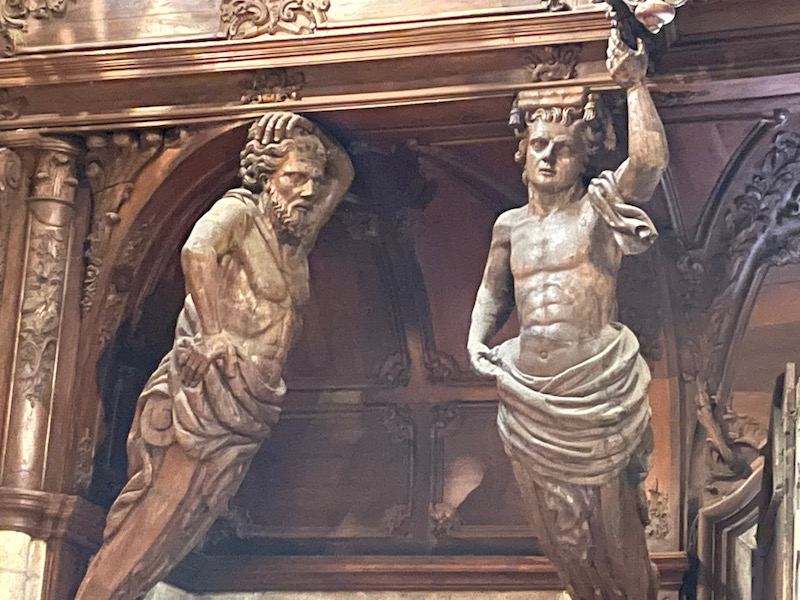
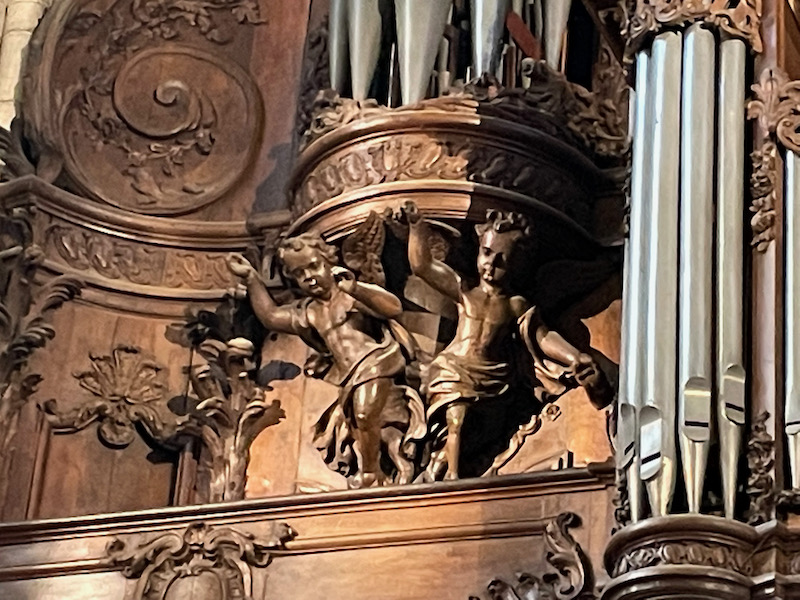
Some stained-glass windows ... the first is the North rose window which dates back to 1451. The middle 2 pictures are just really nice, colorful windows, and the last picture shows a window that shows the legend of Saint Vincent of Spain, which is from the 12th century.
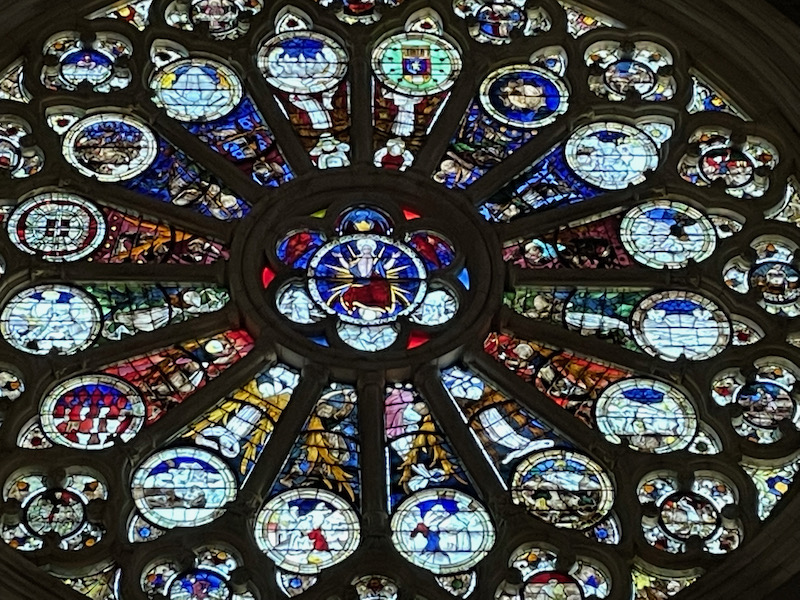
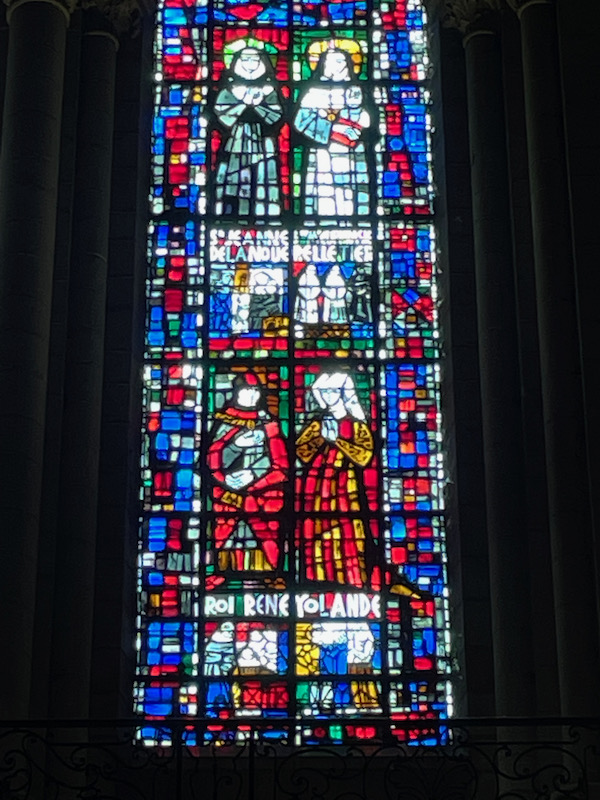
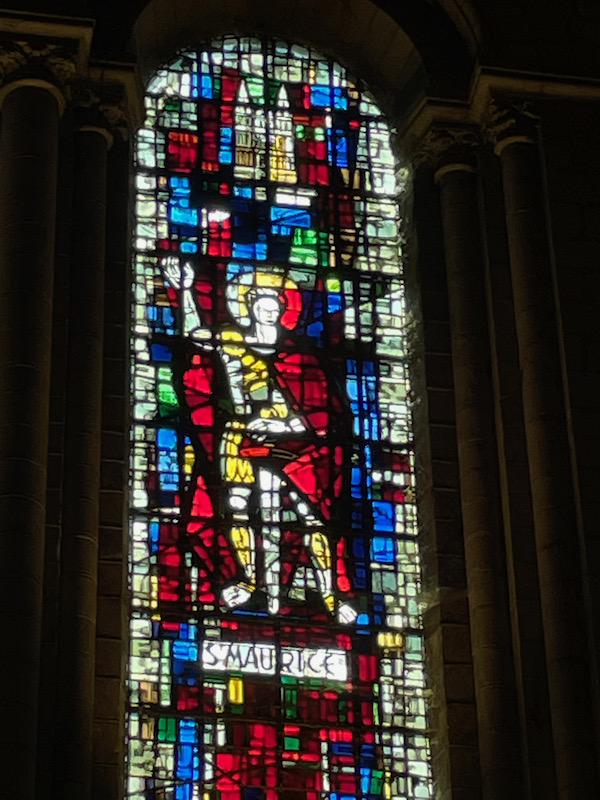
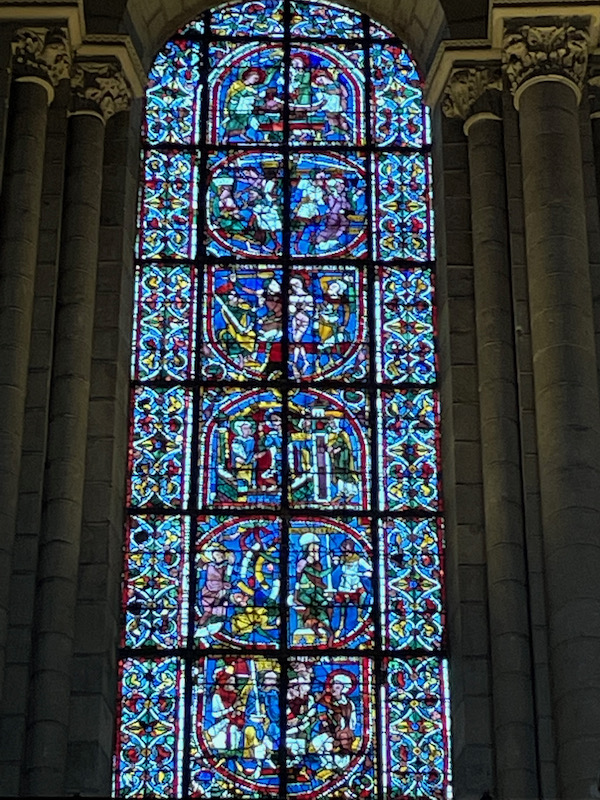
One of the nights, we had this amazing sunset.
